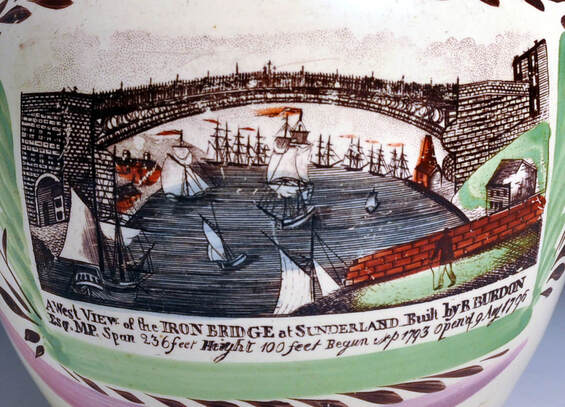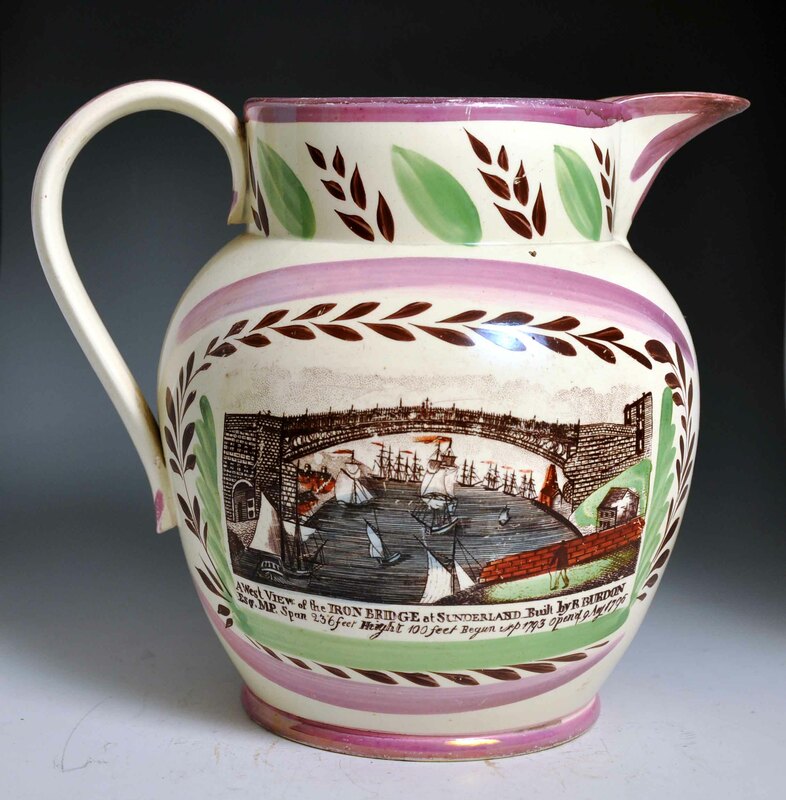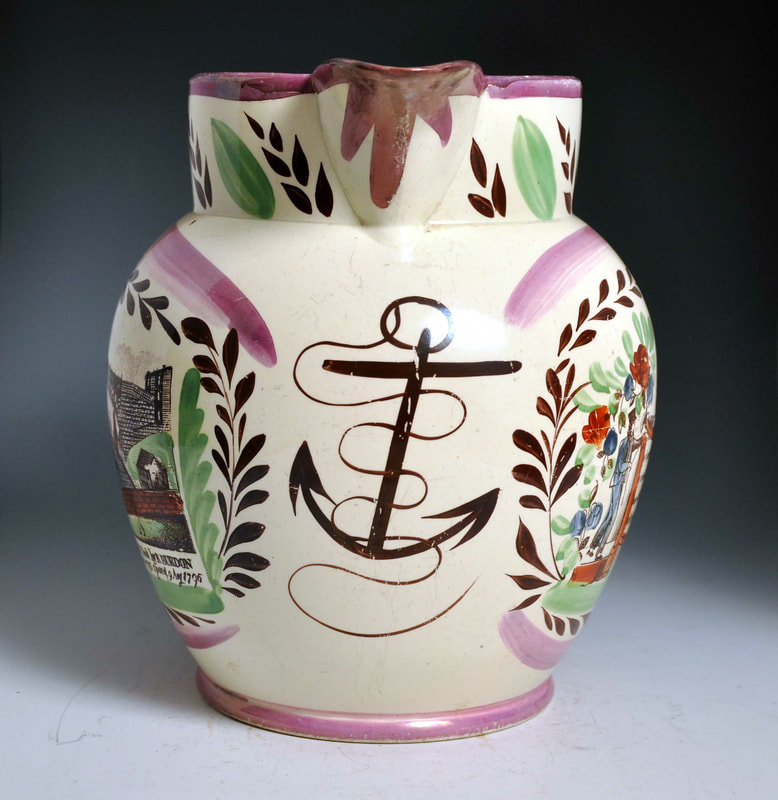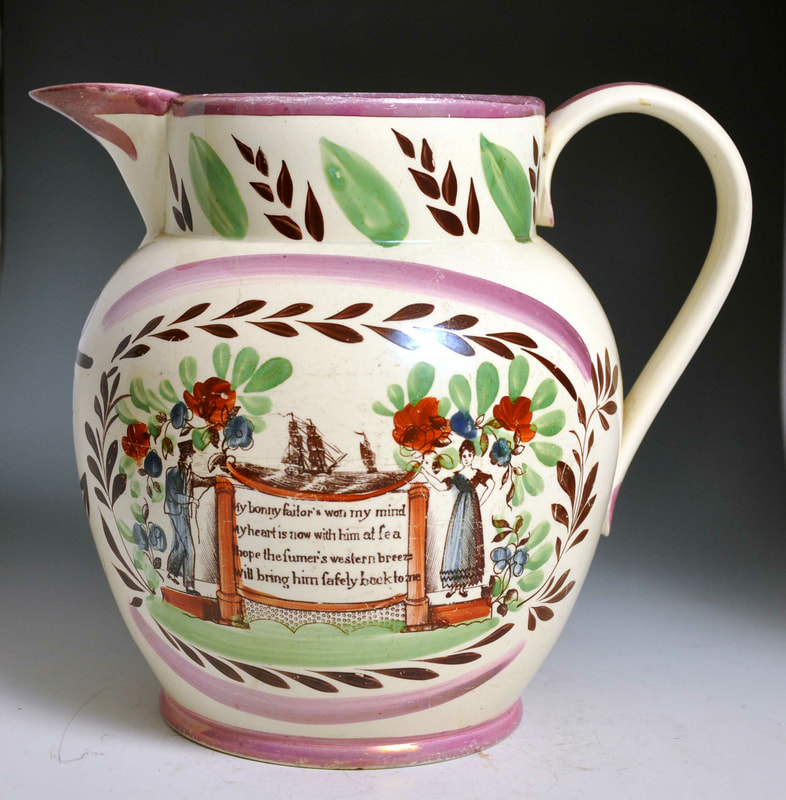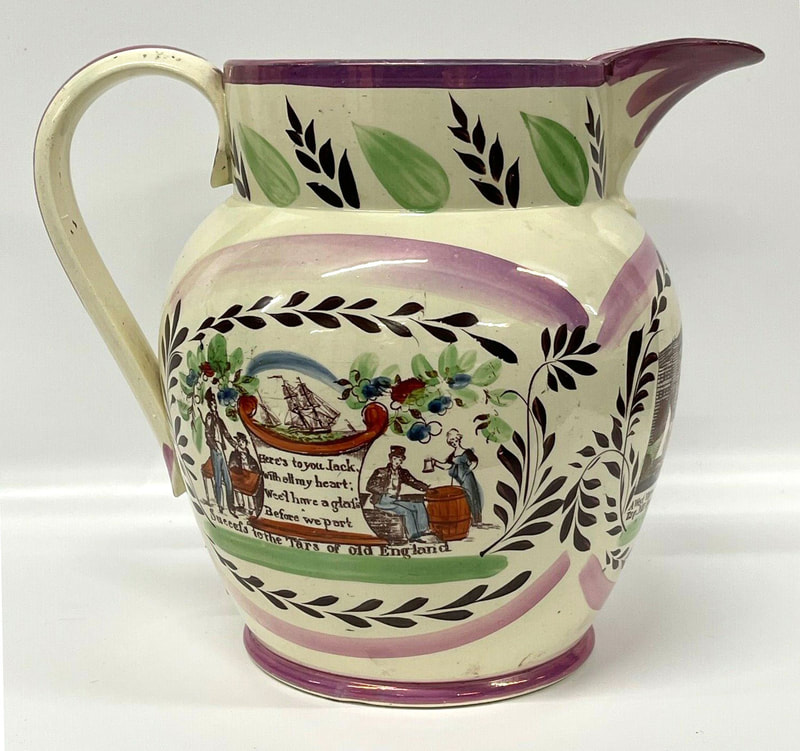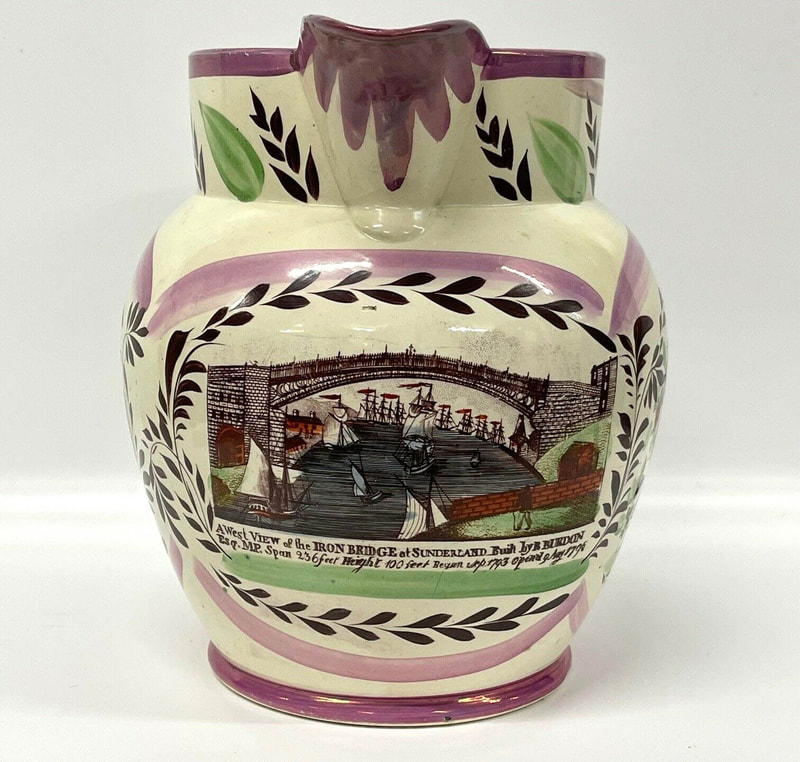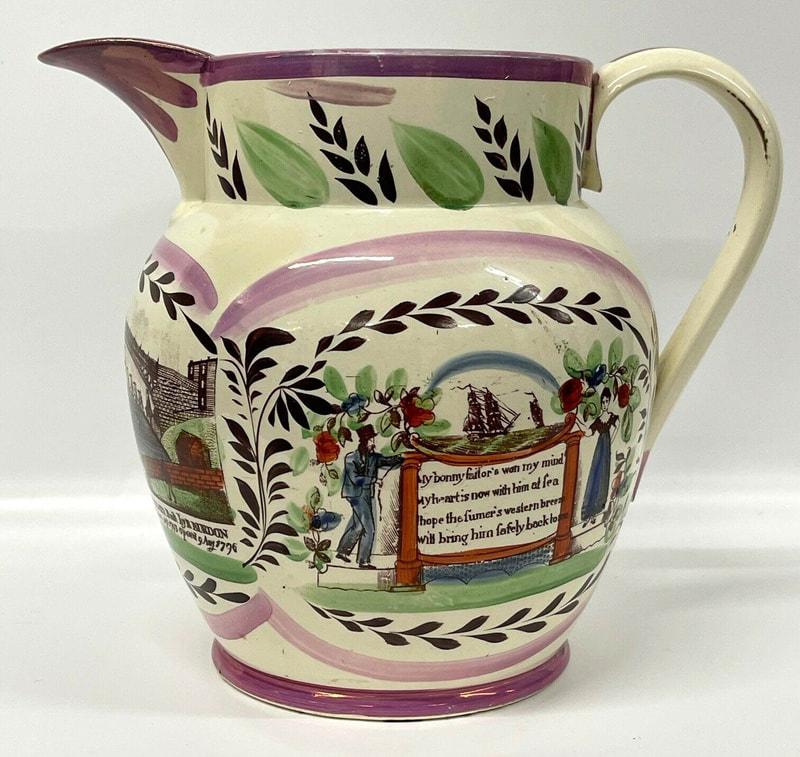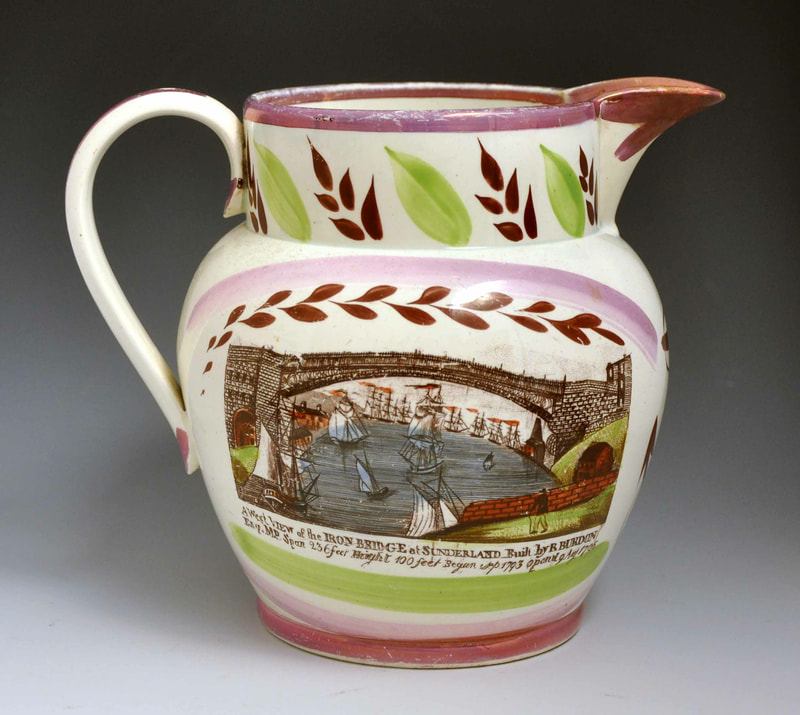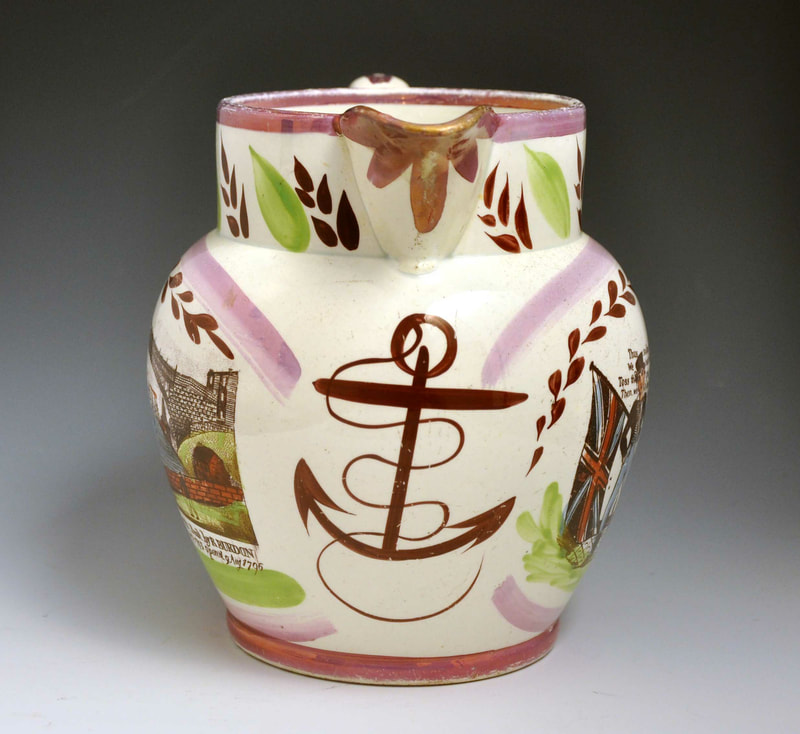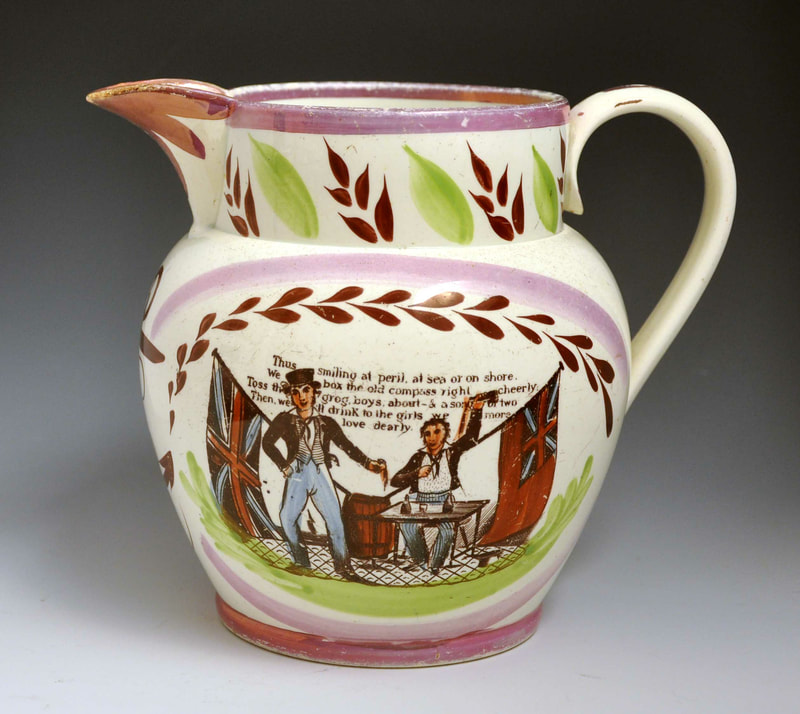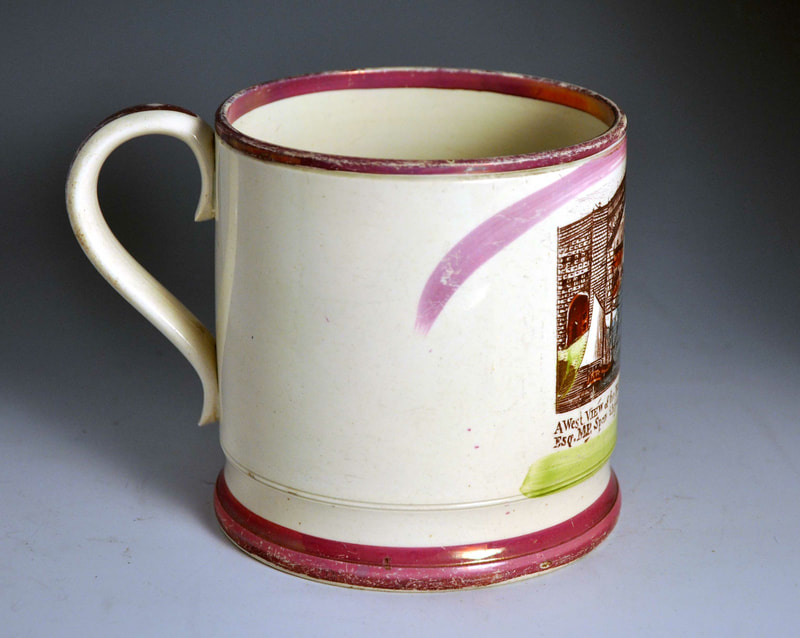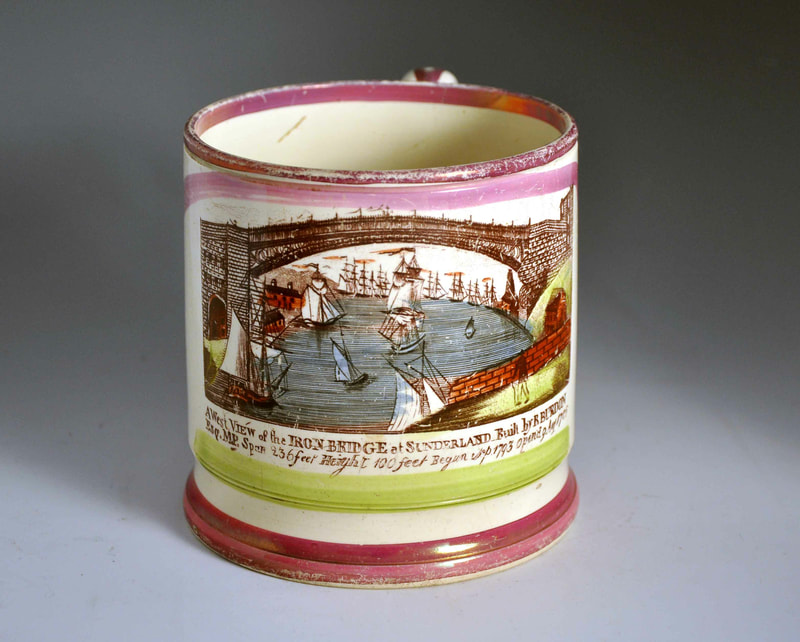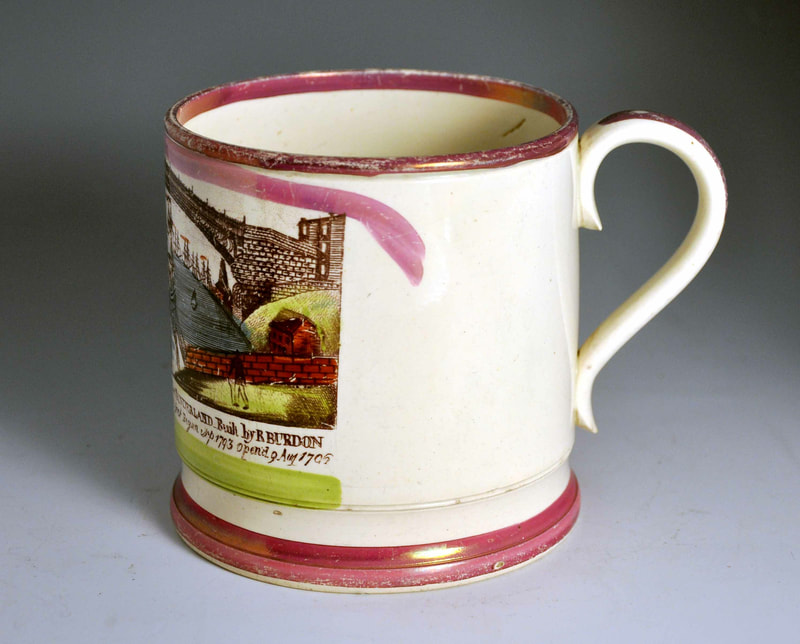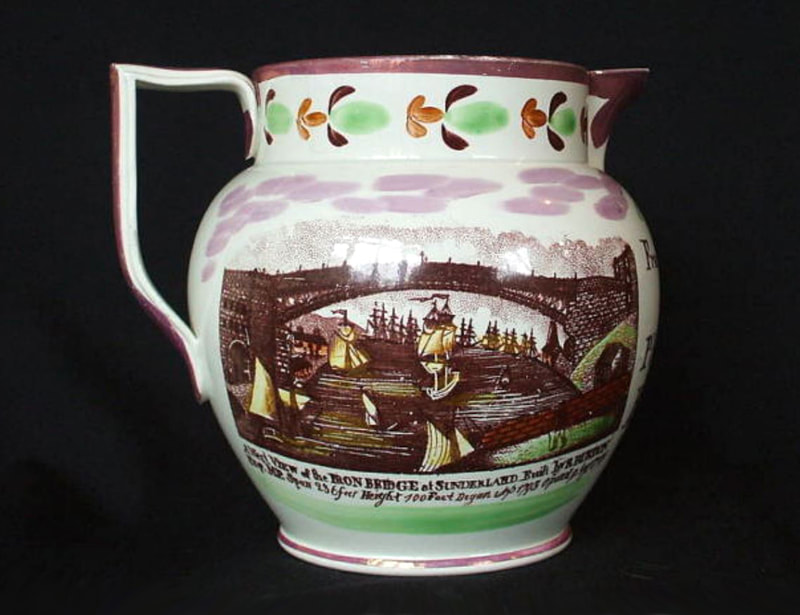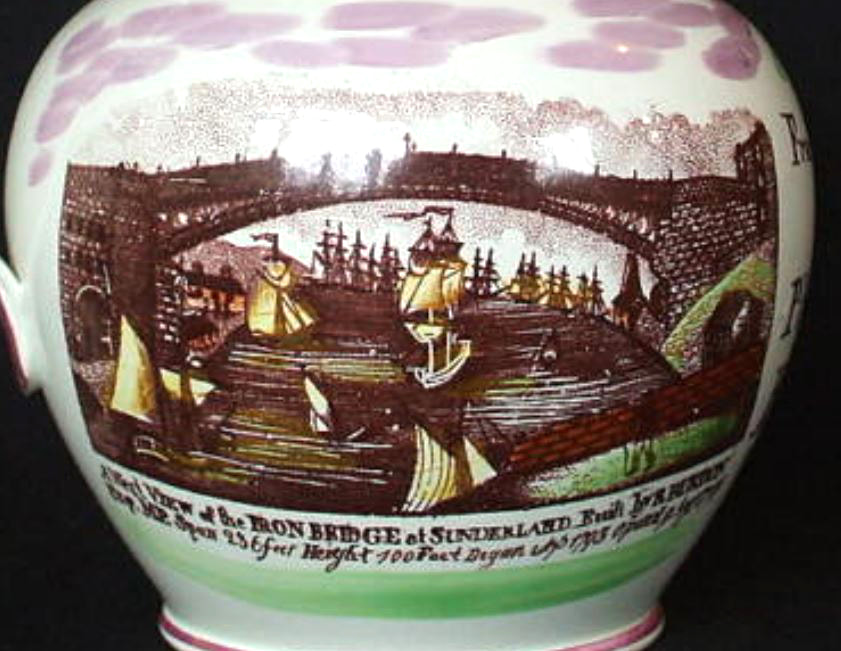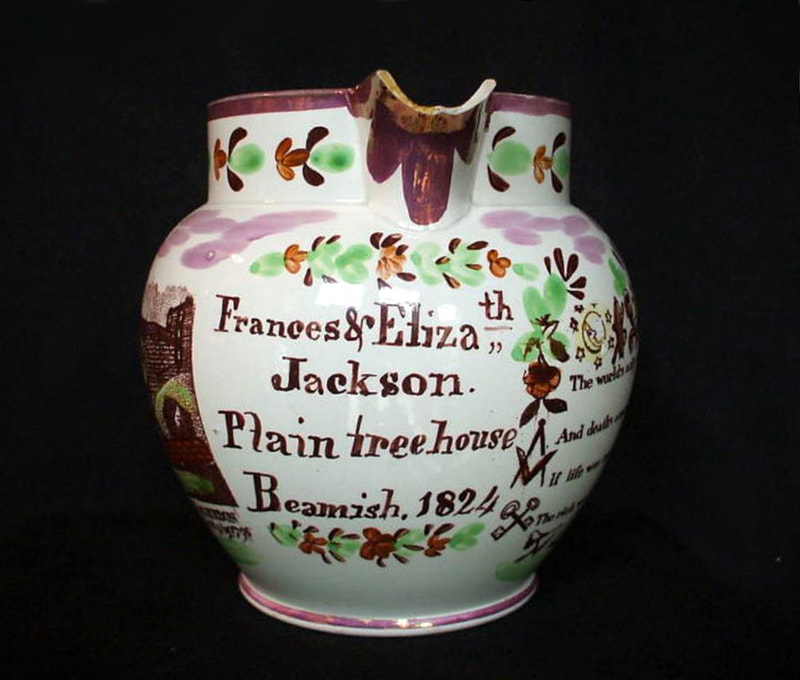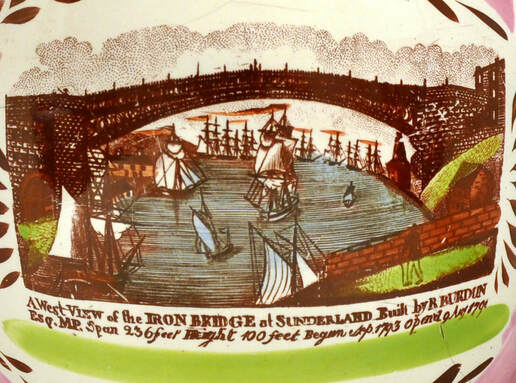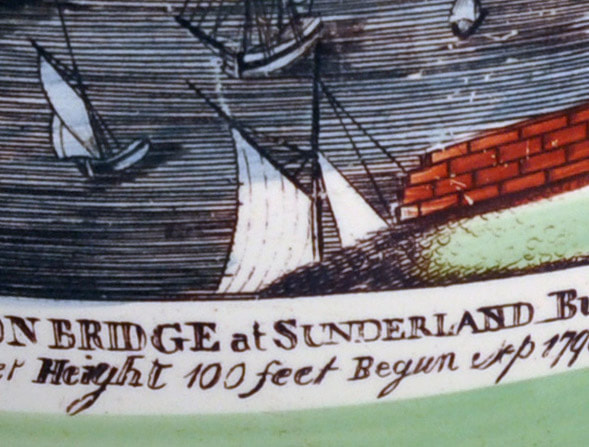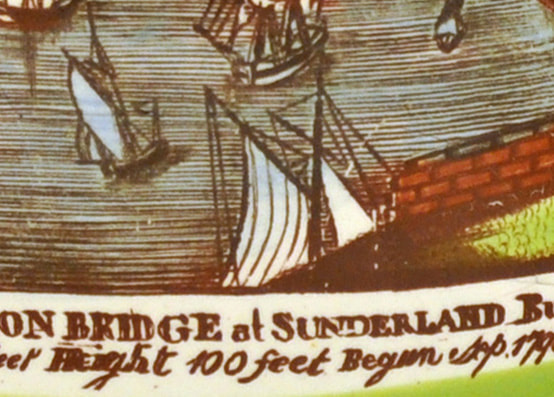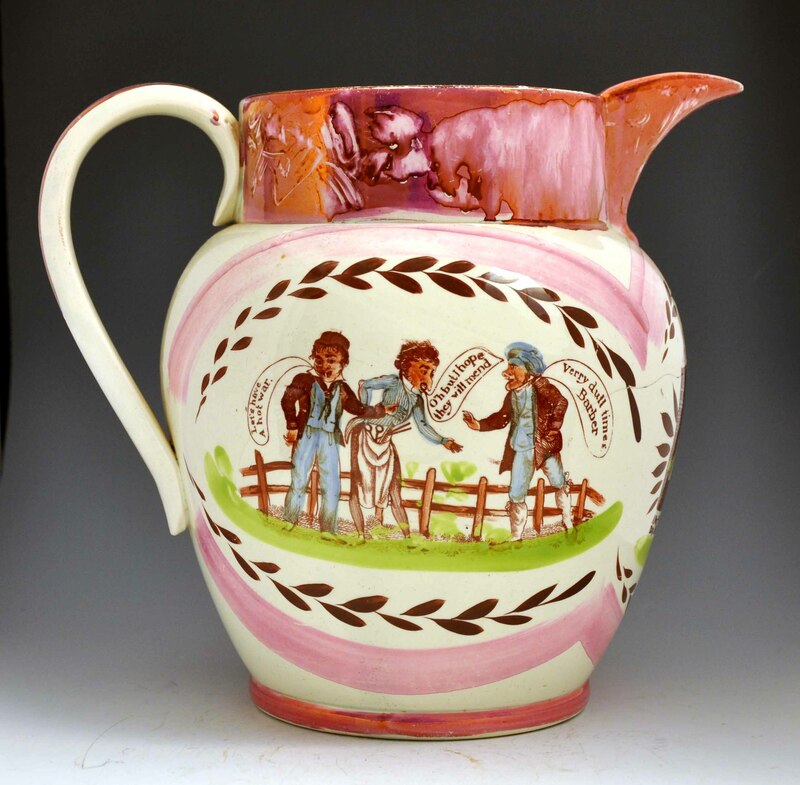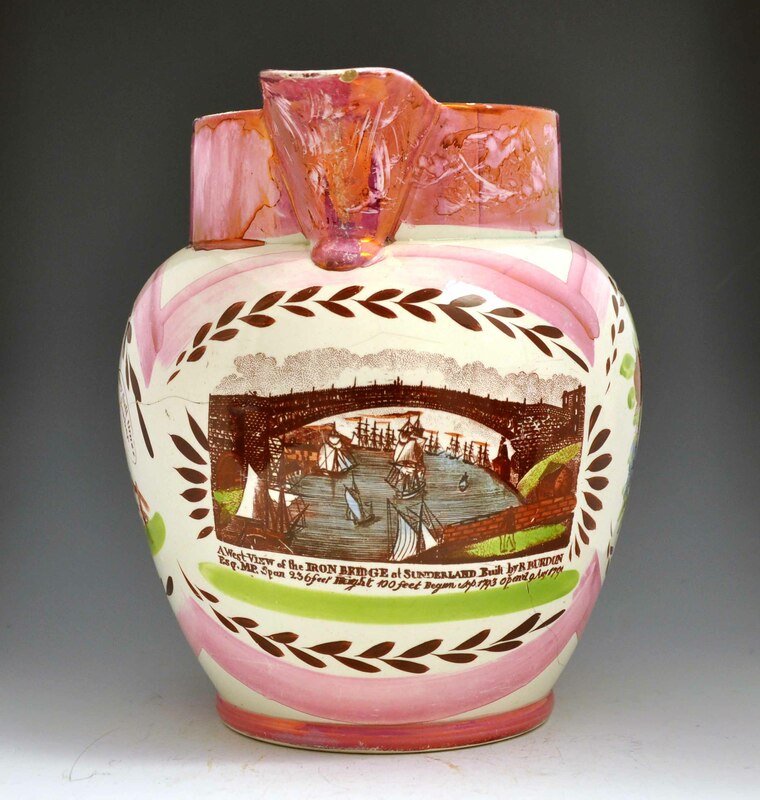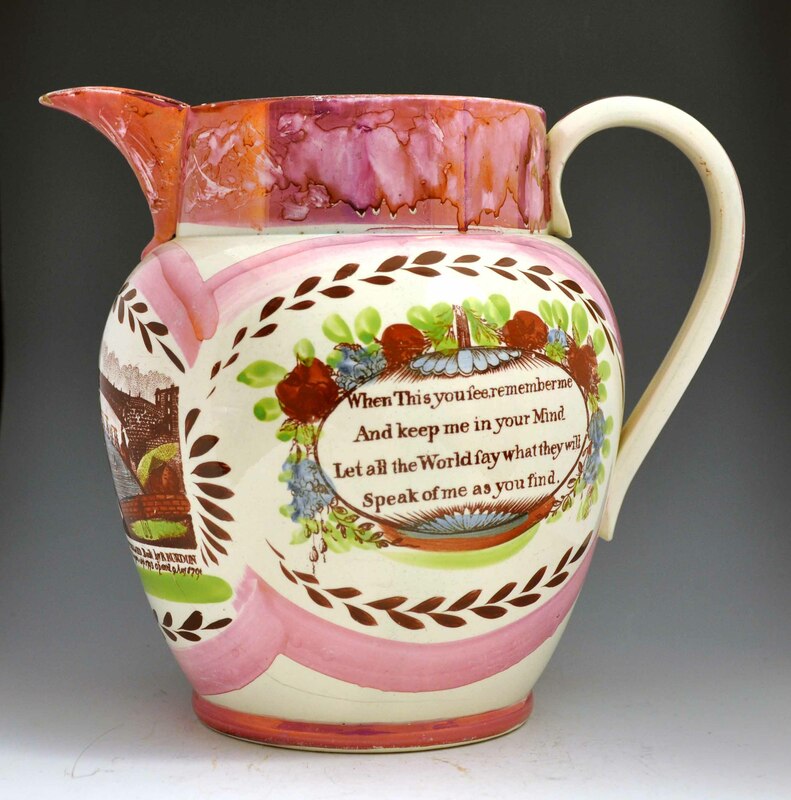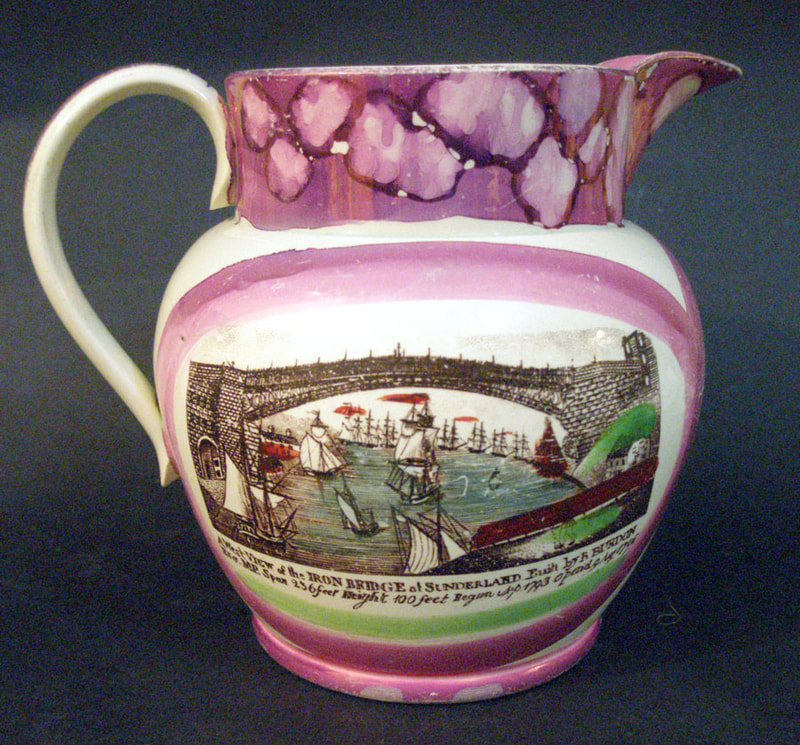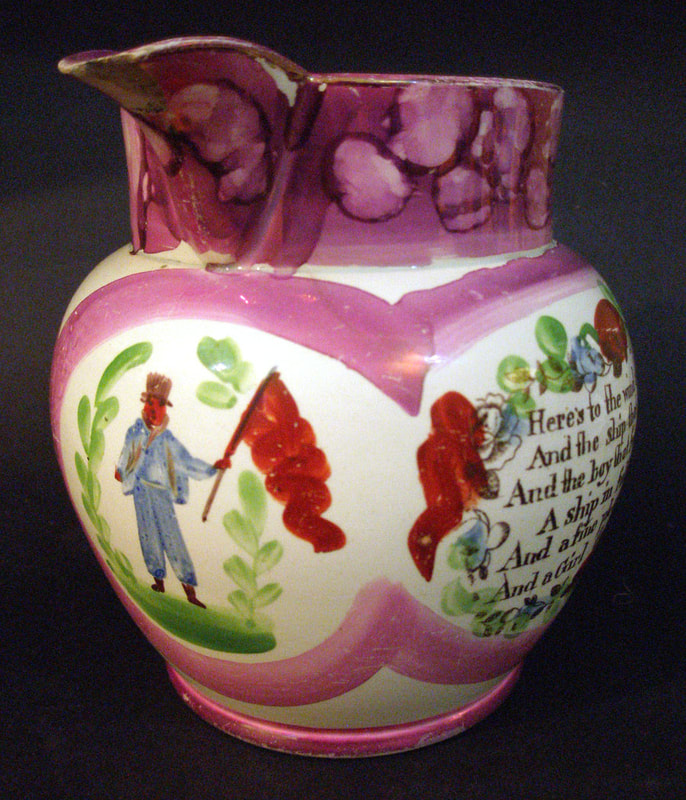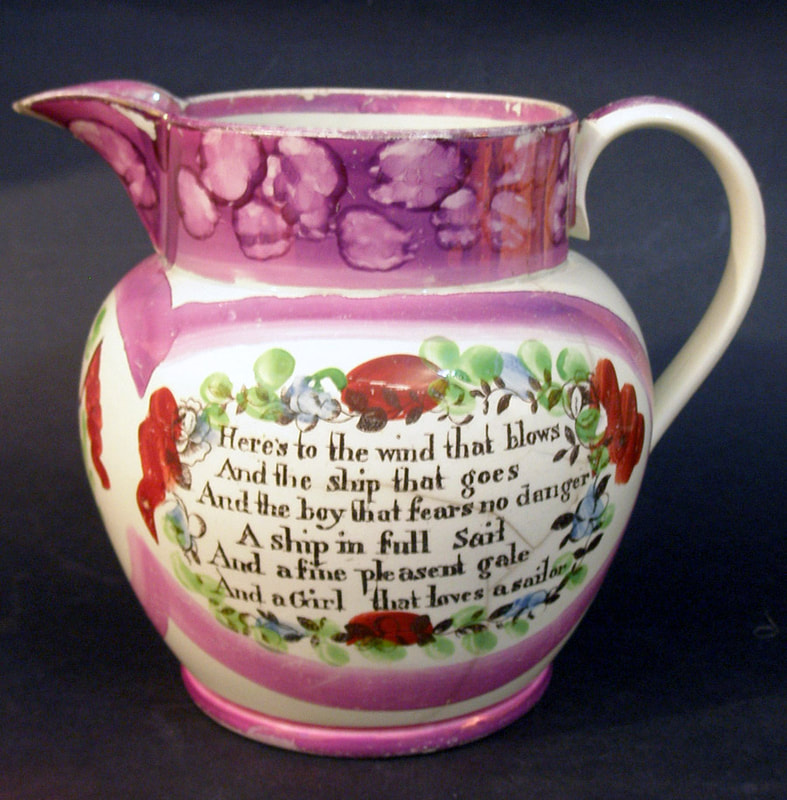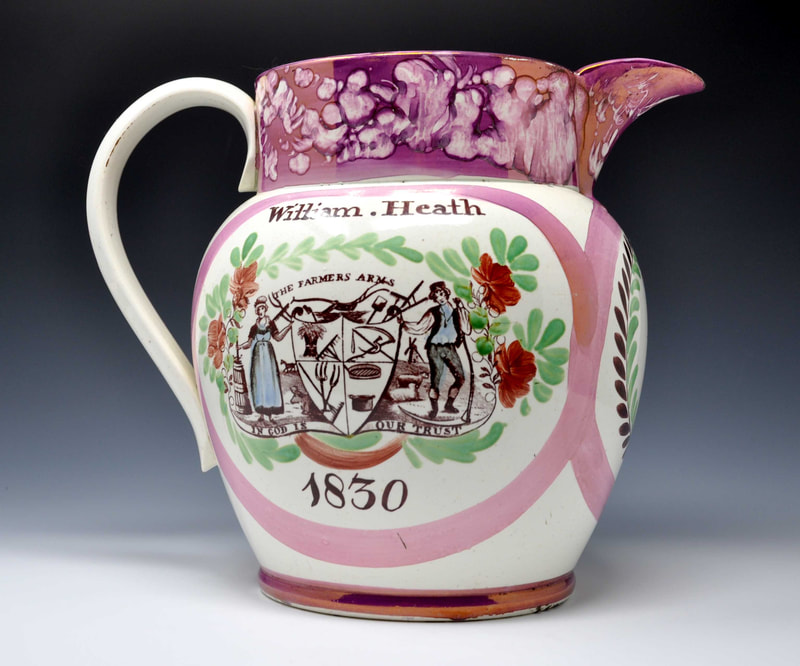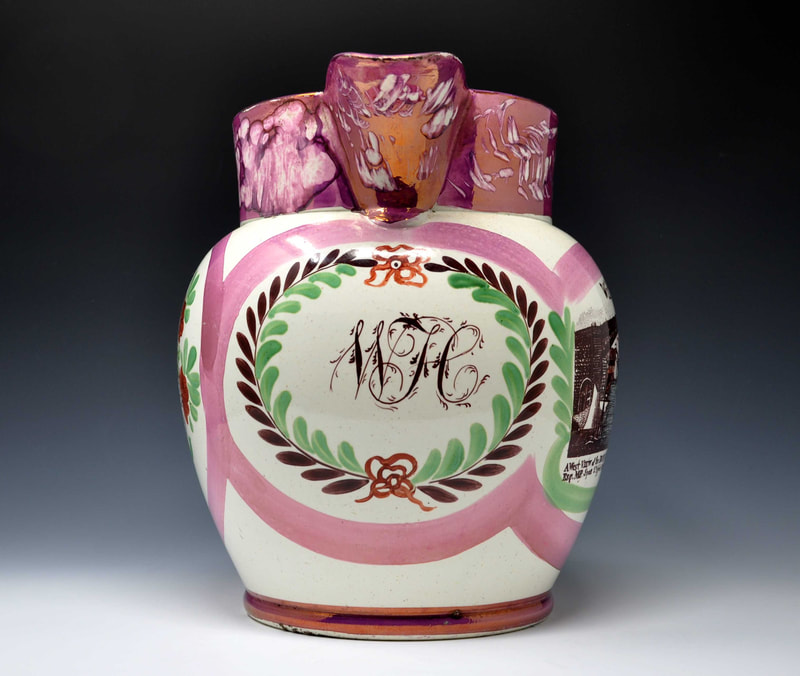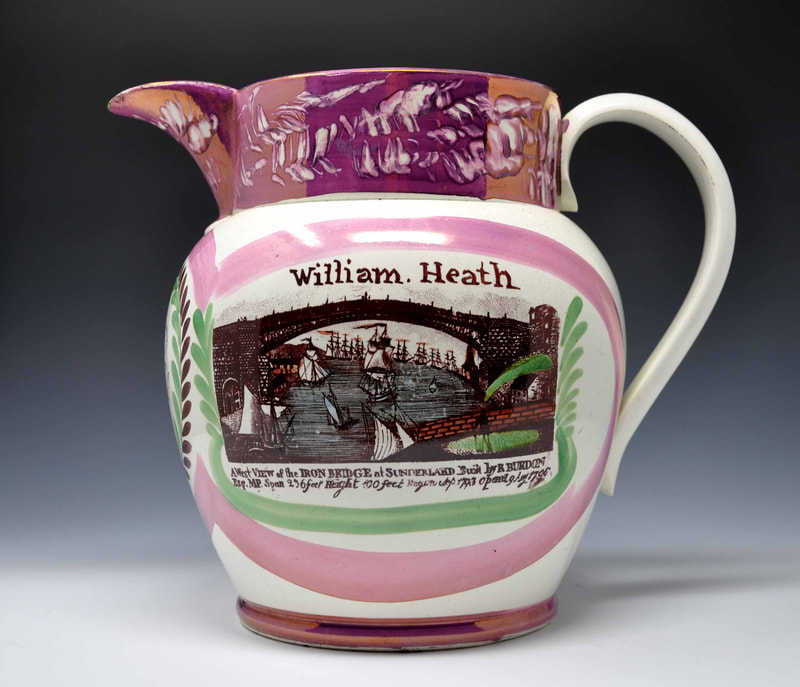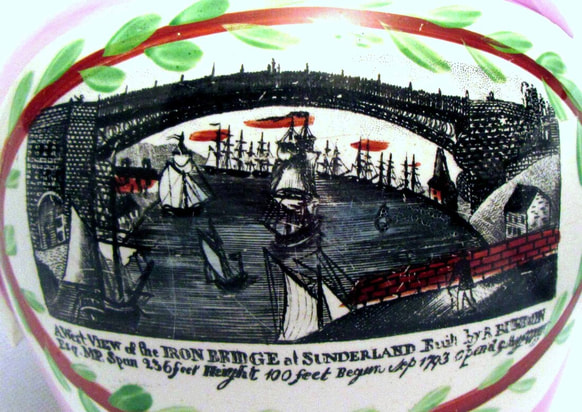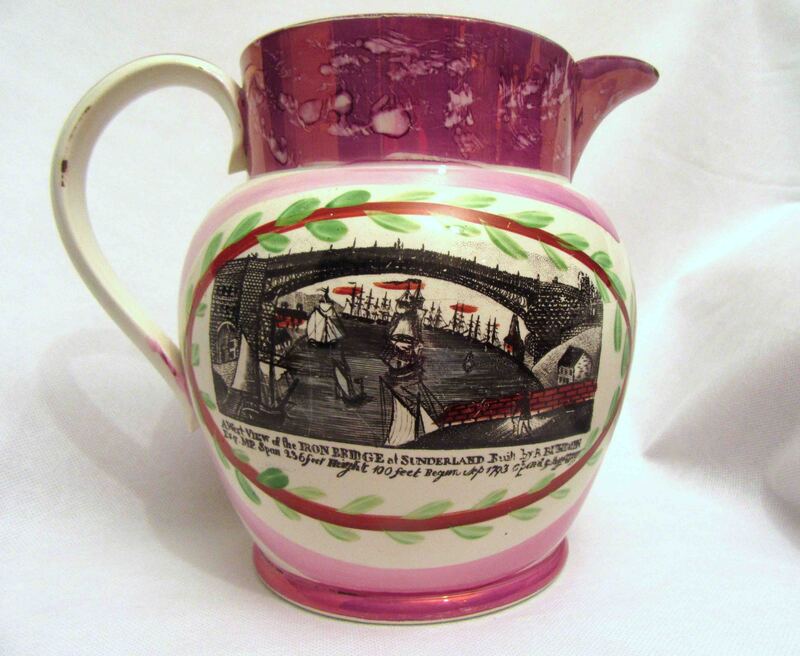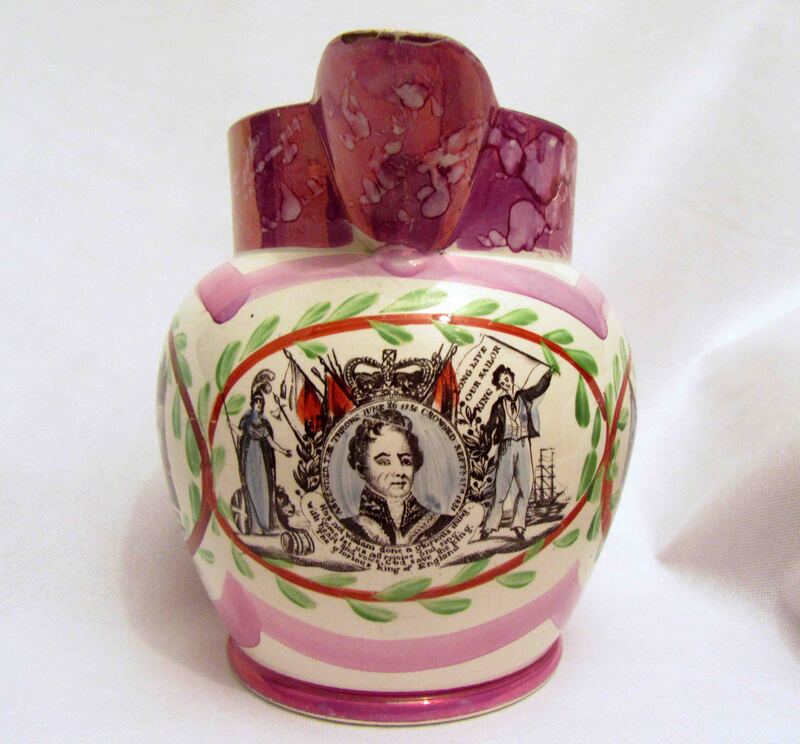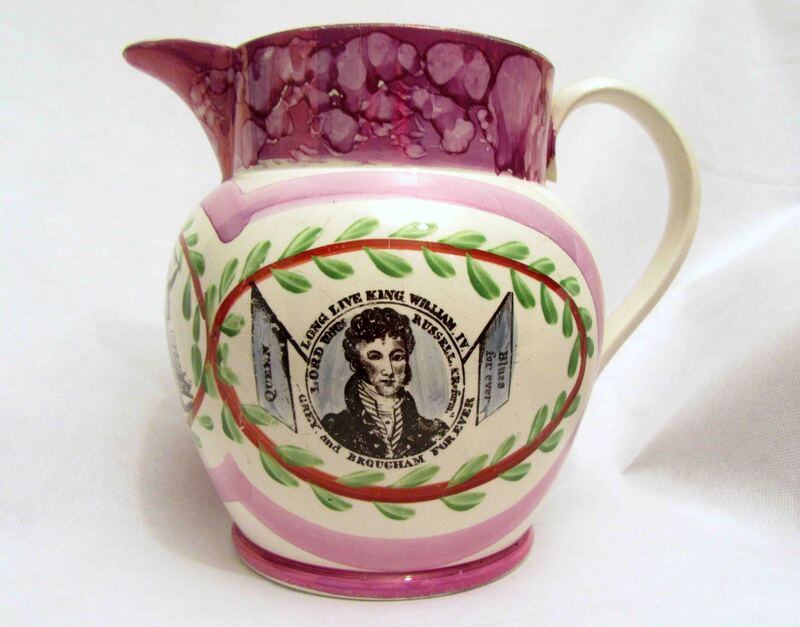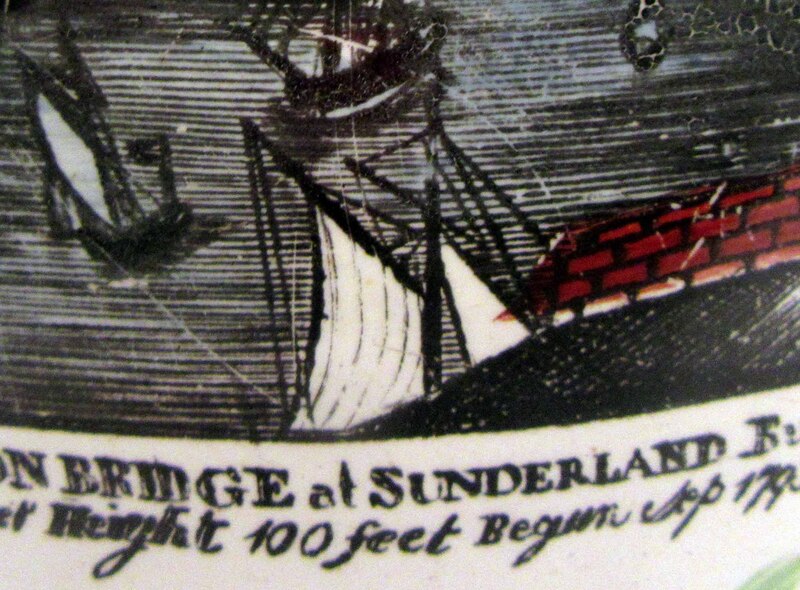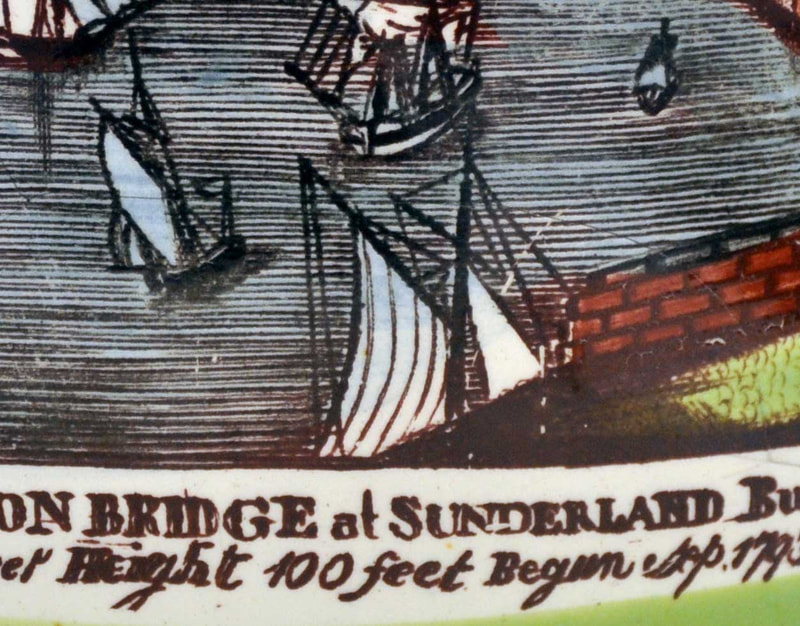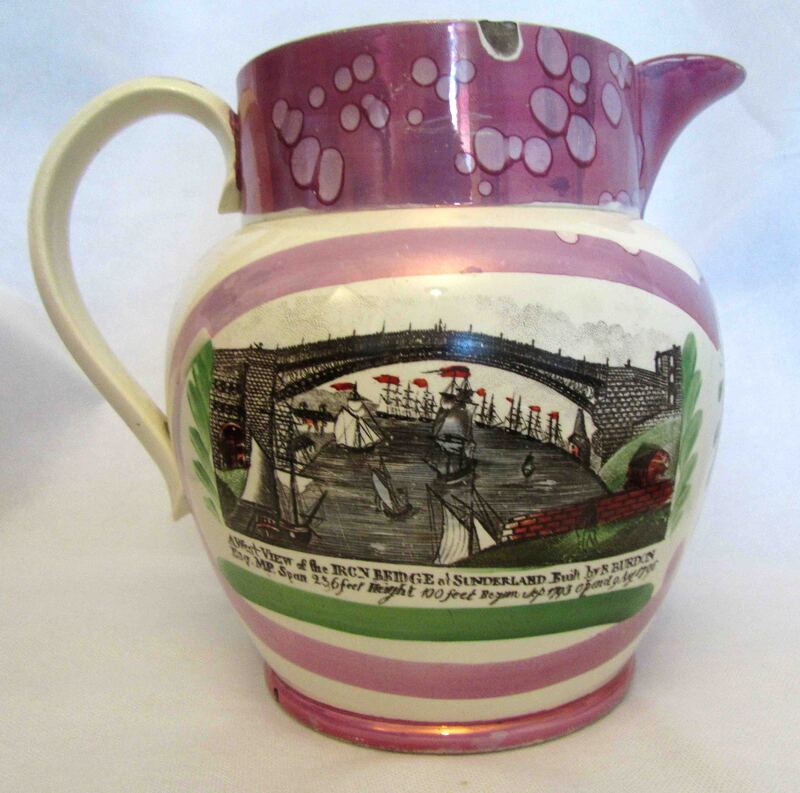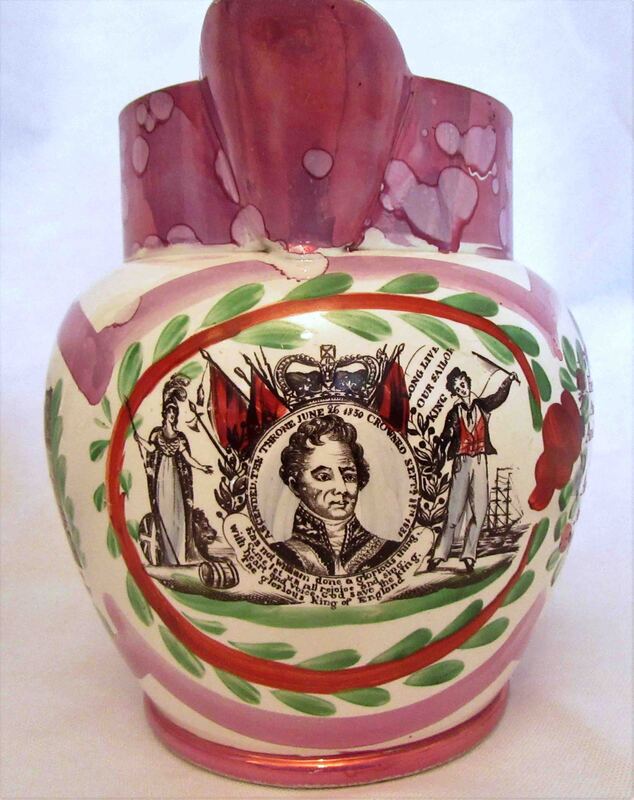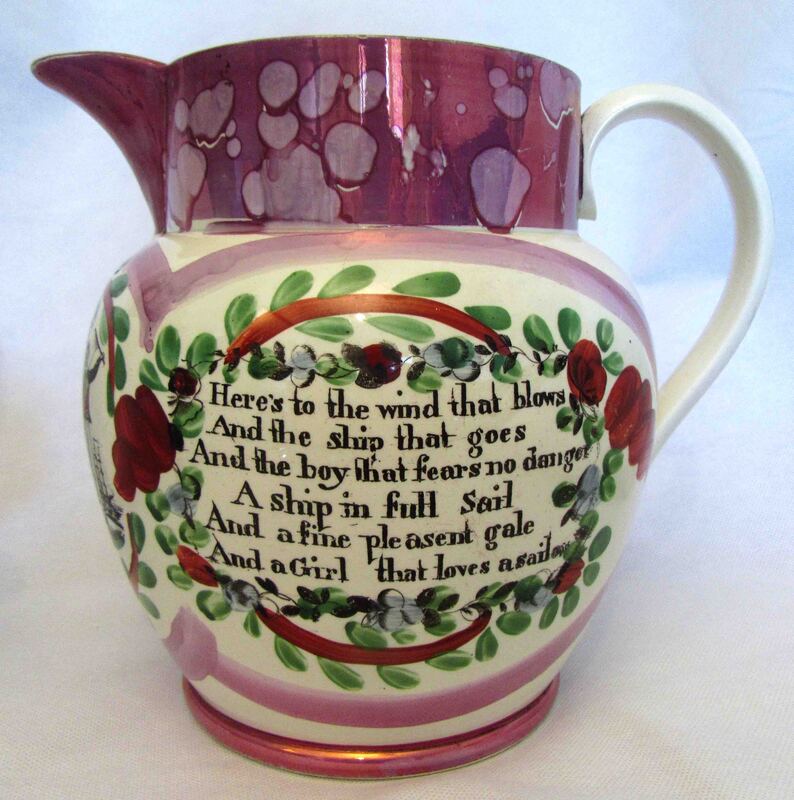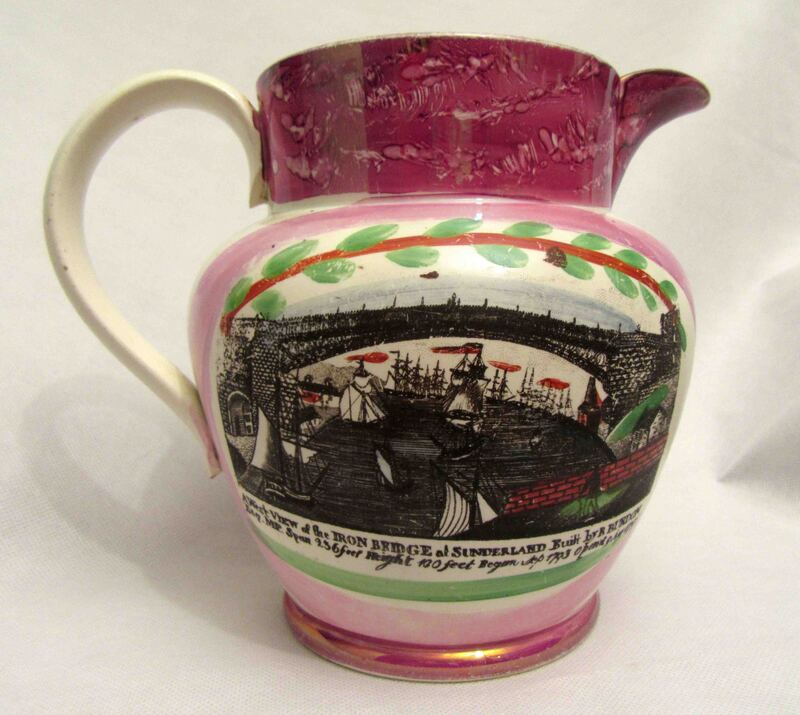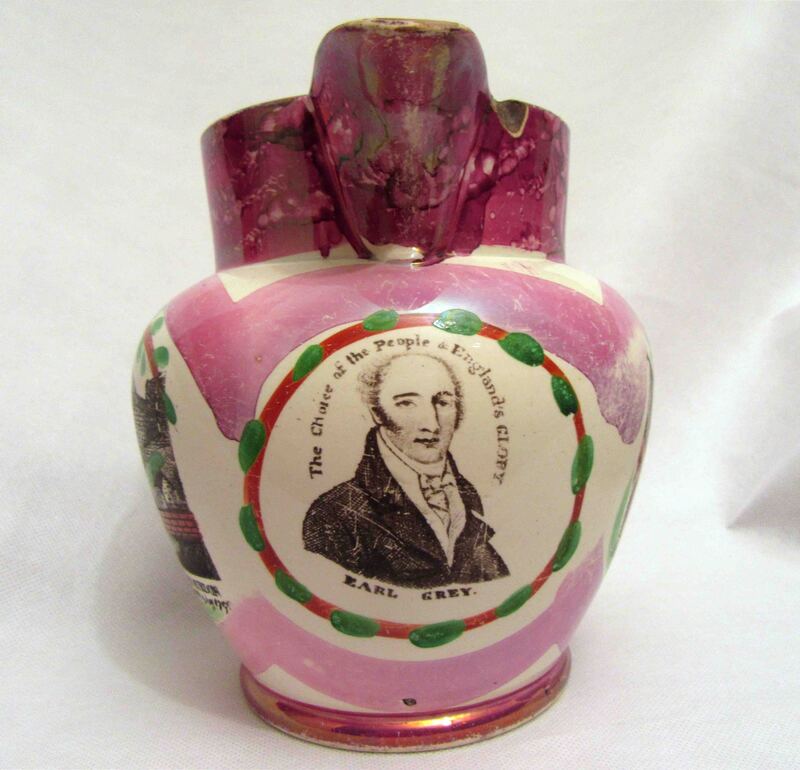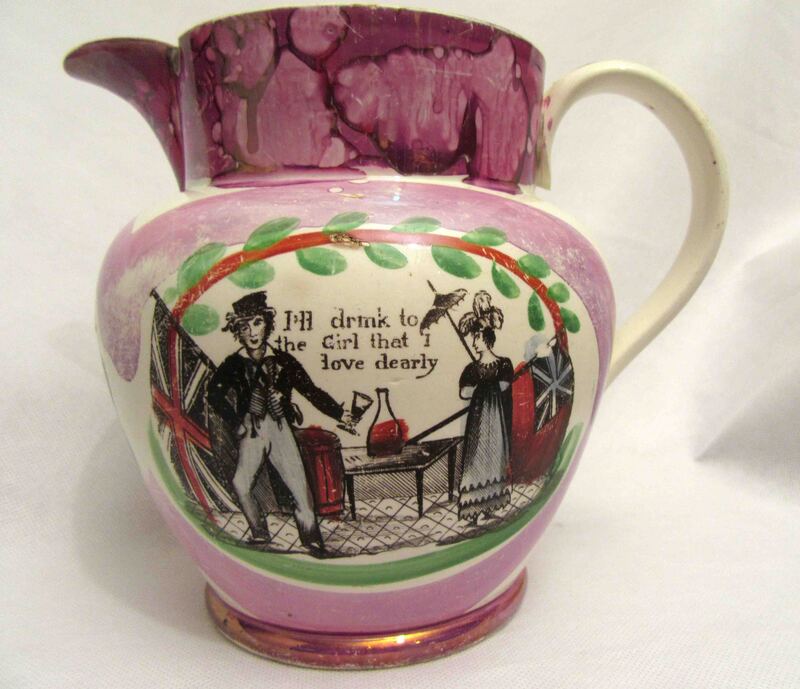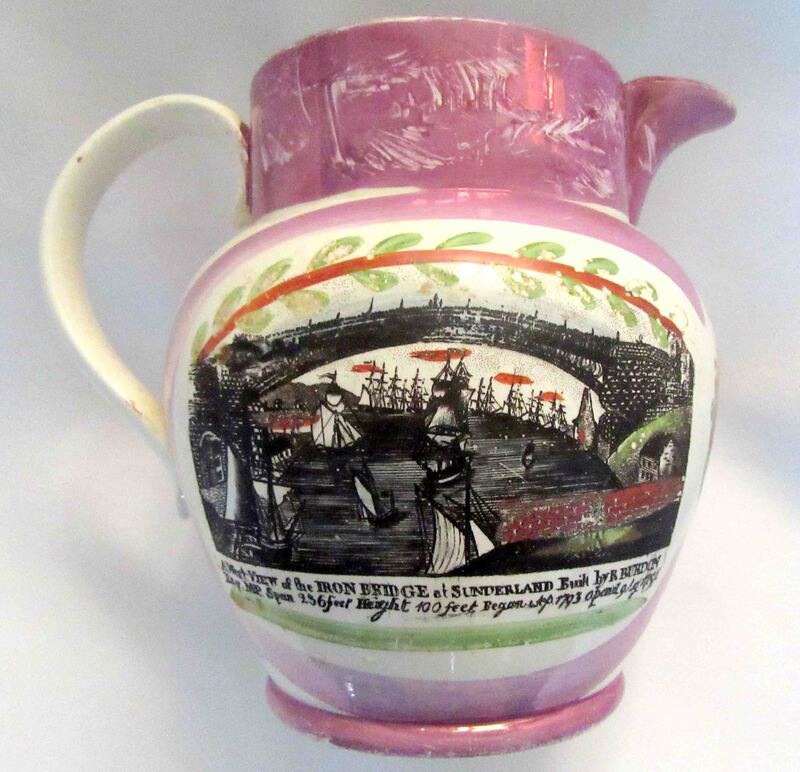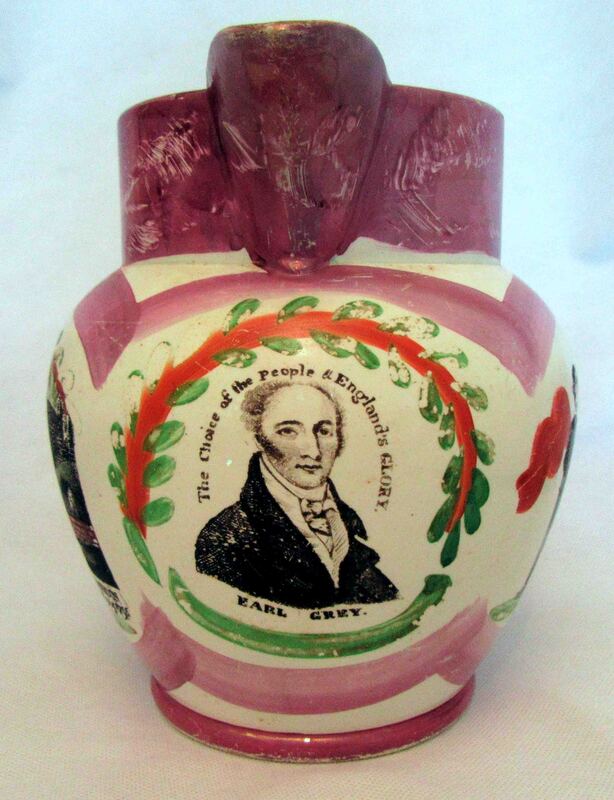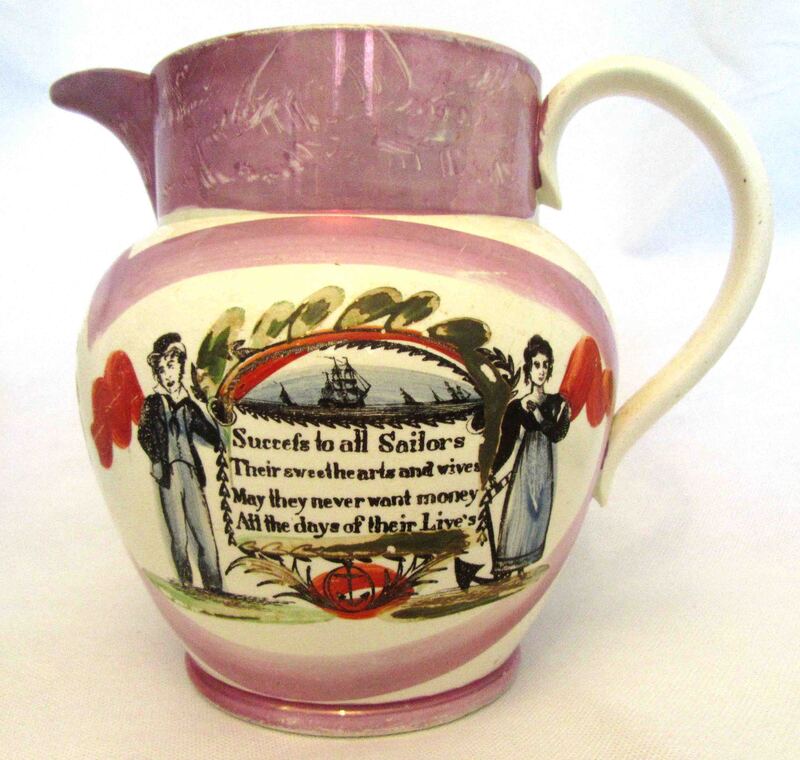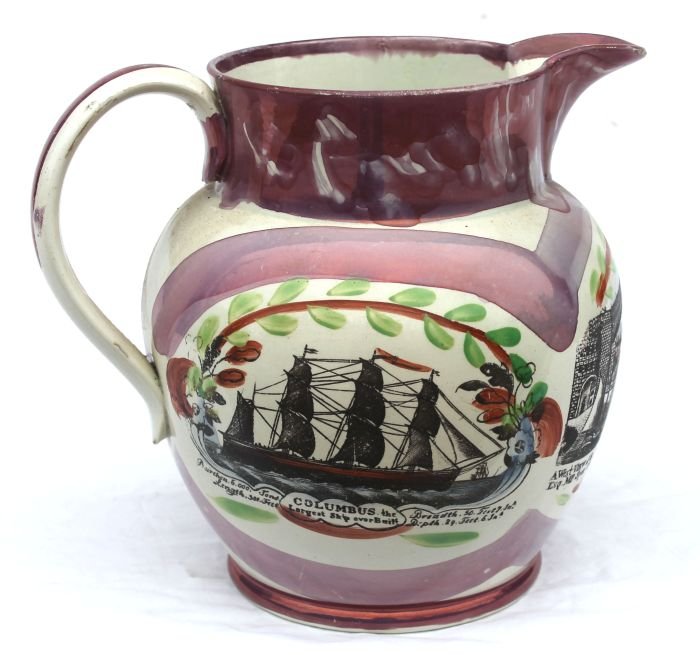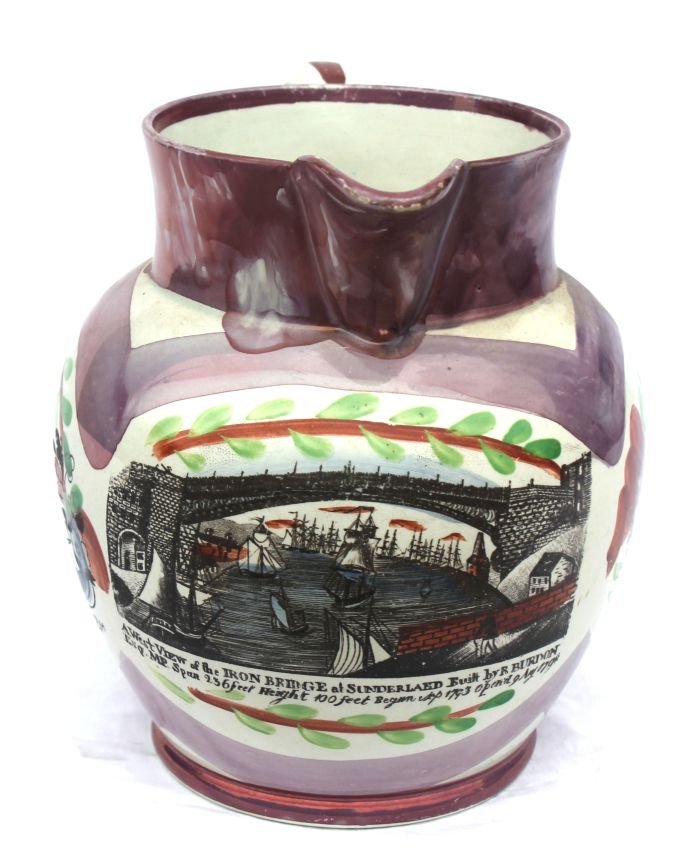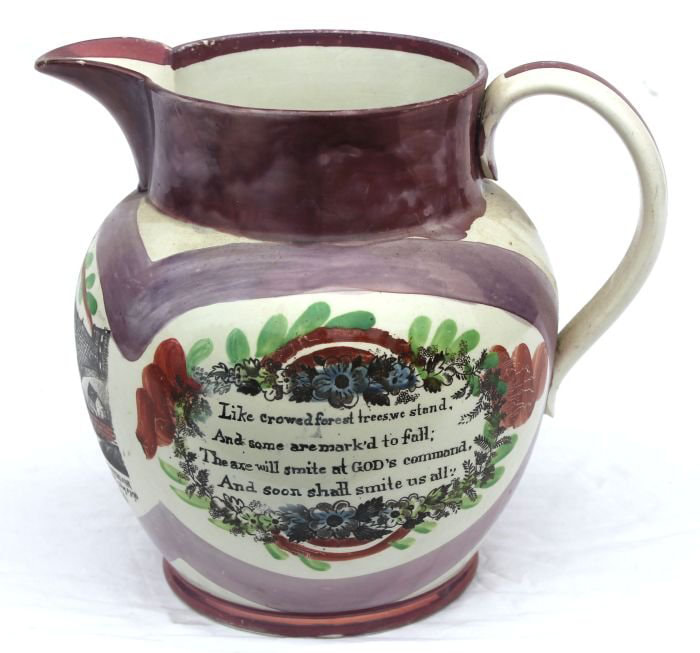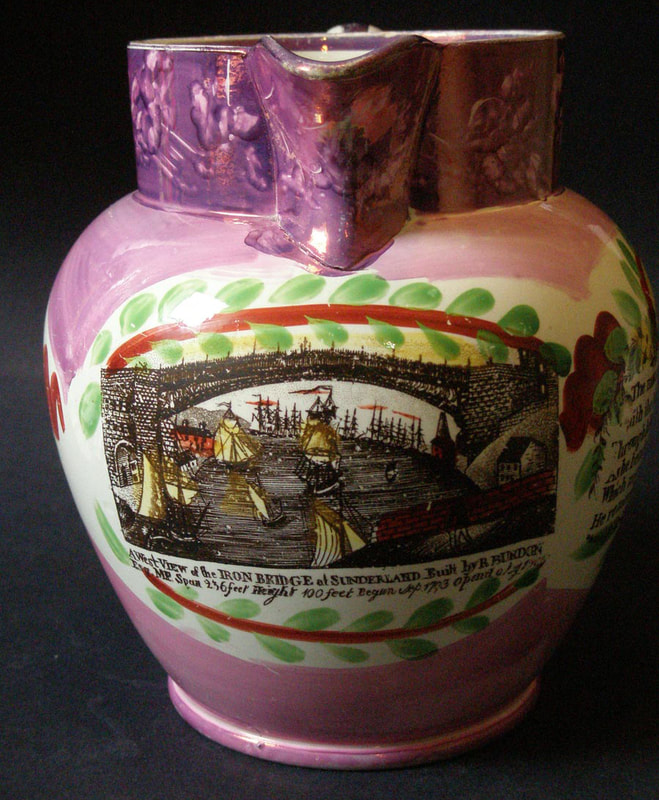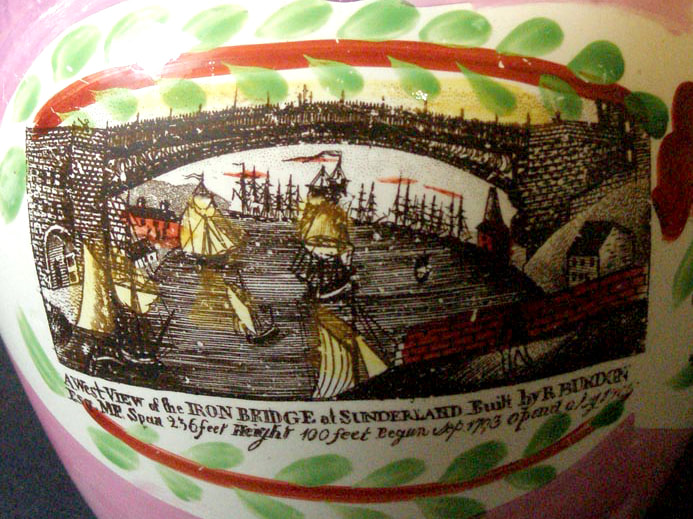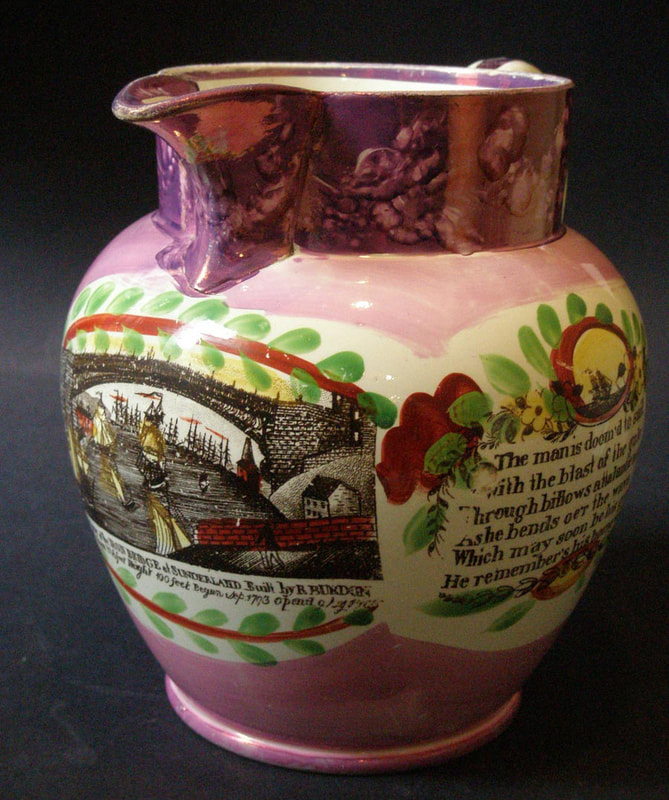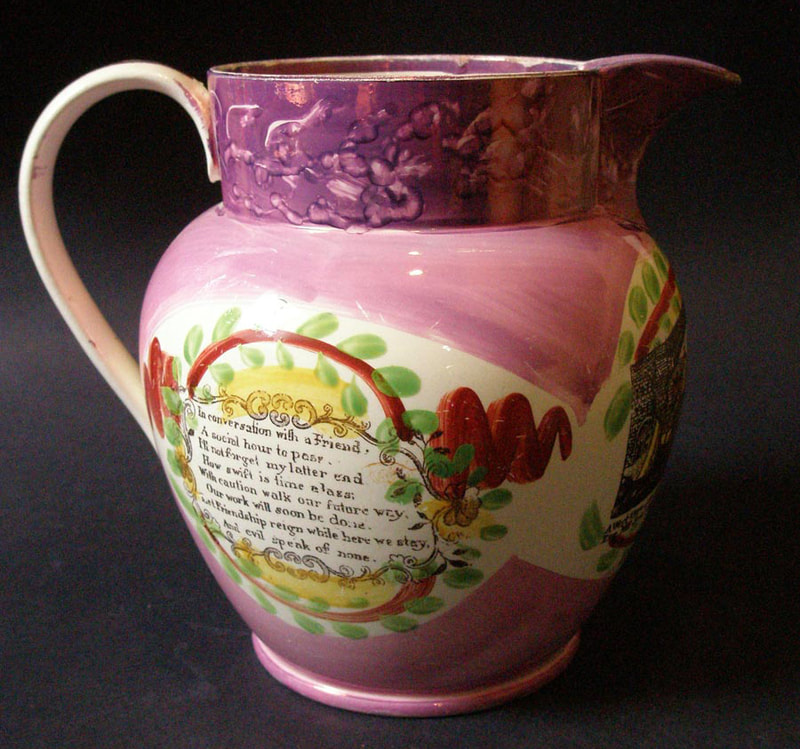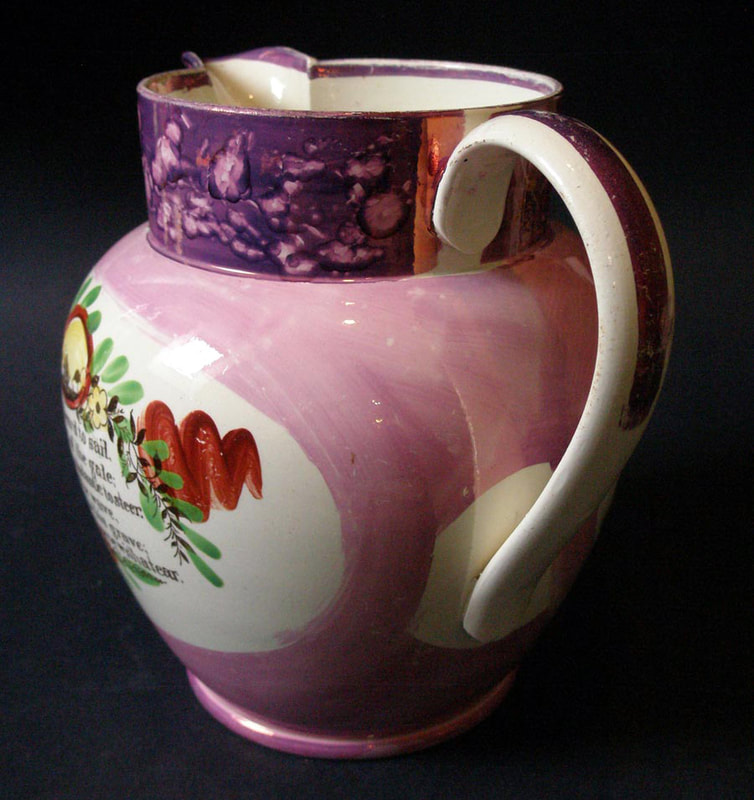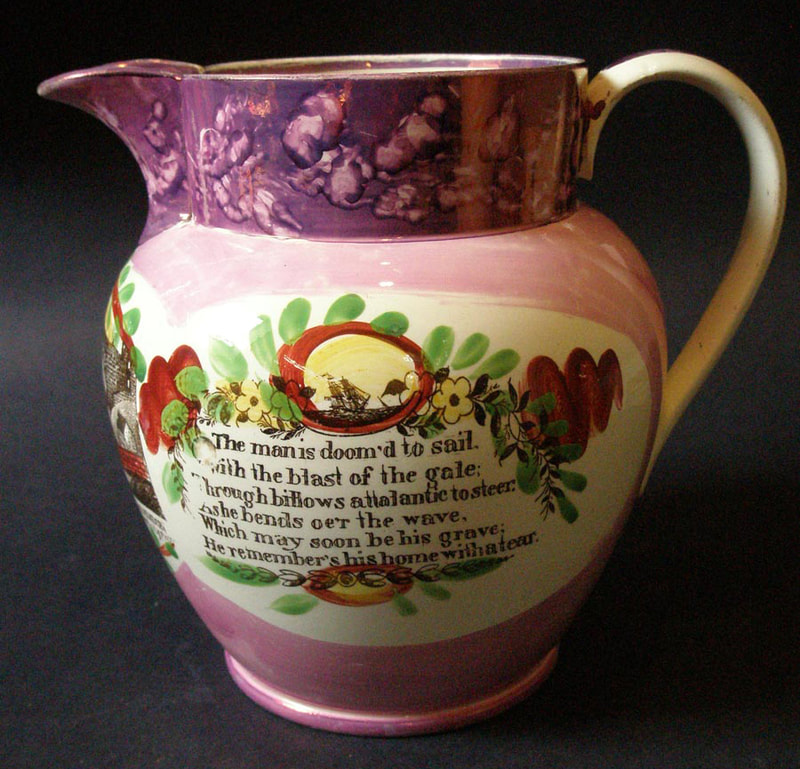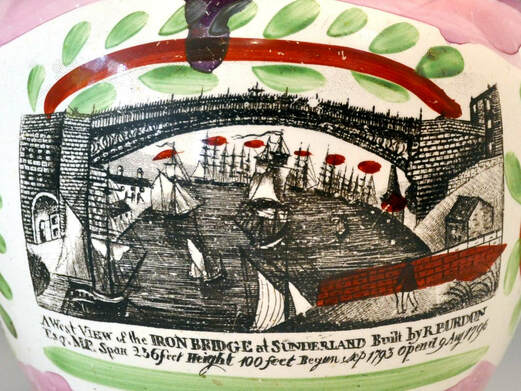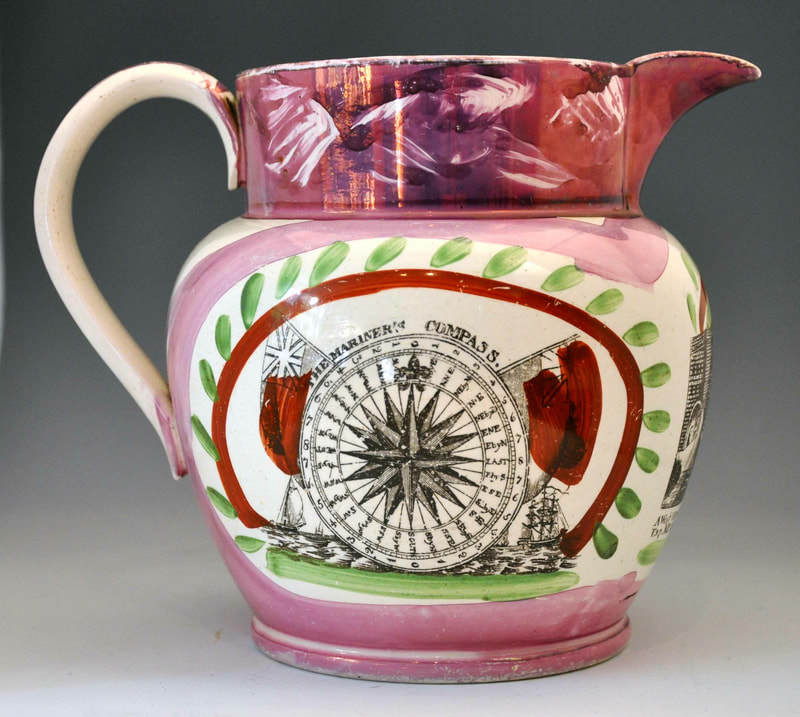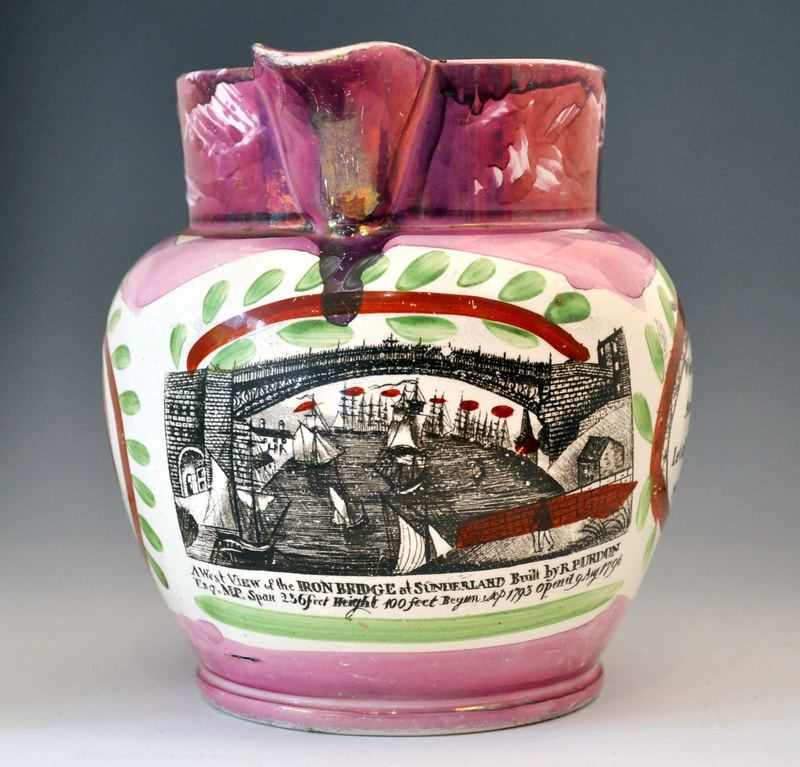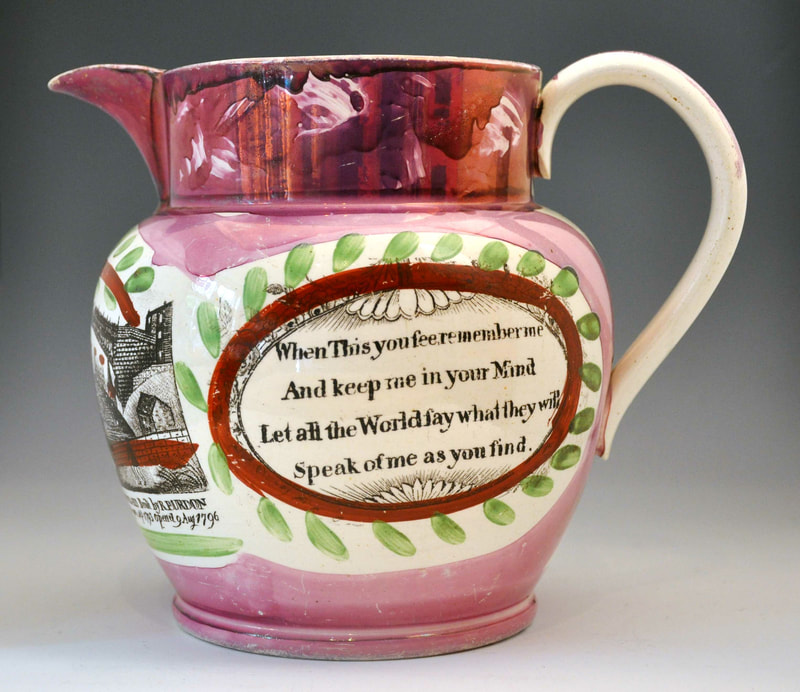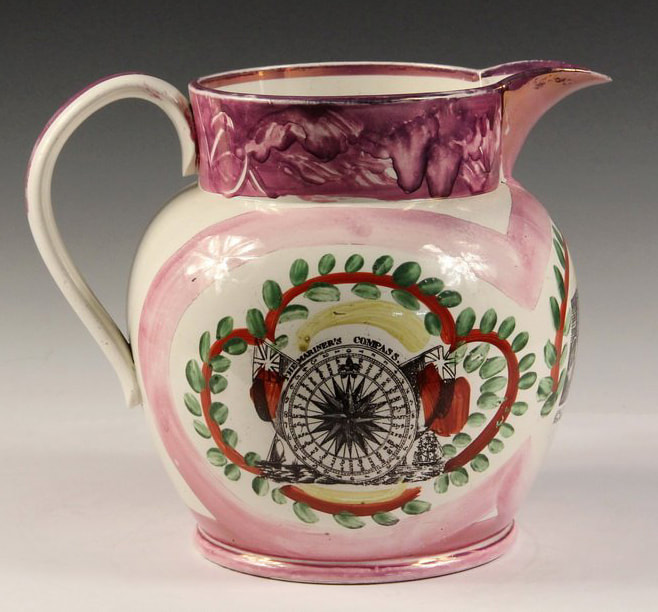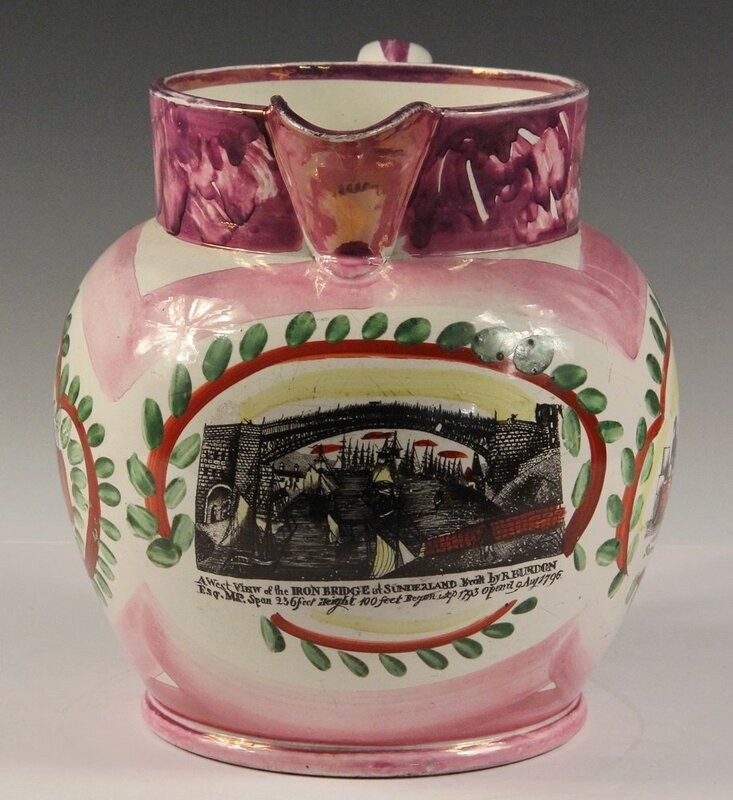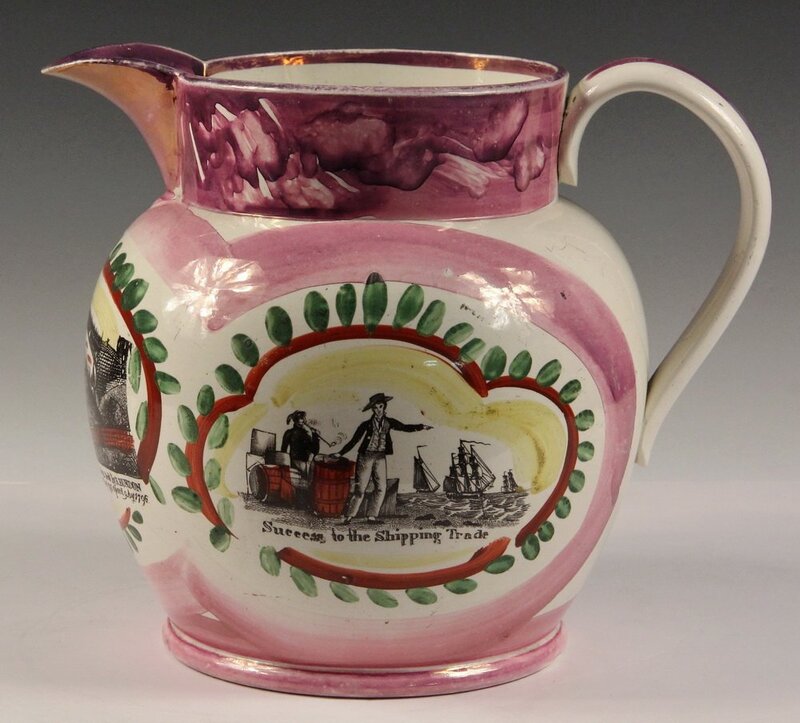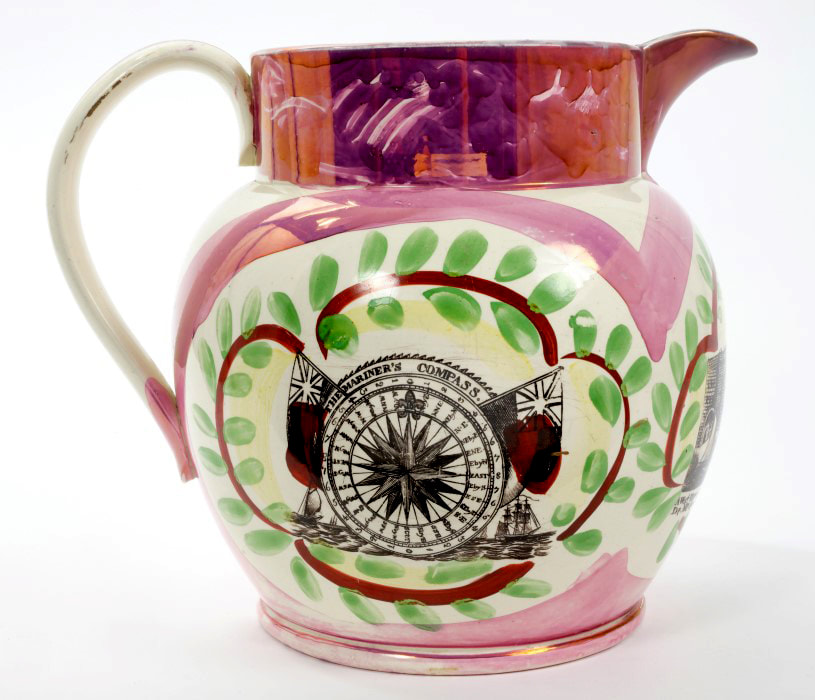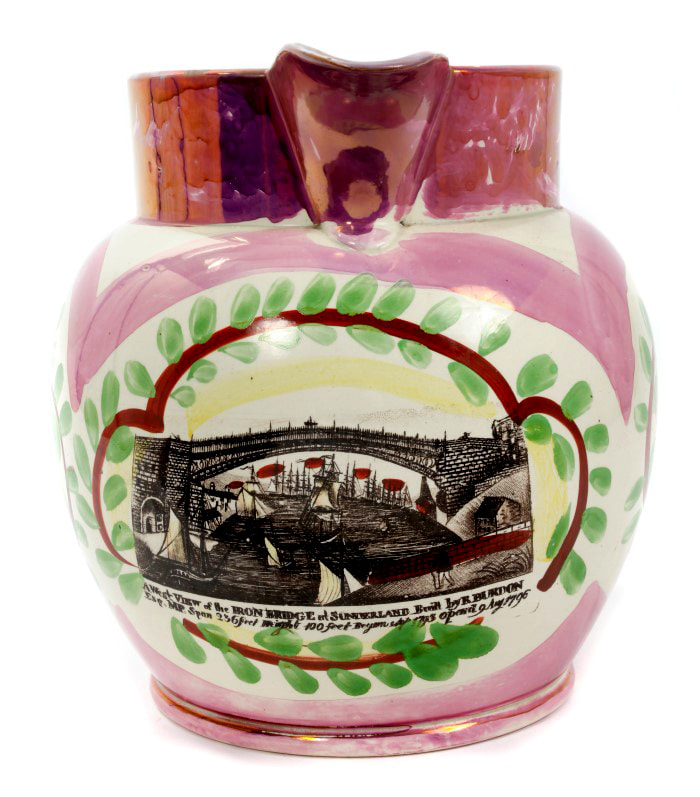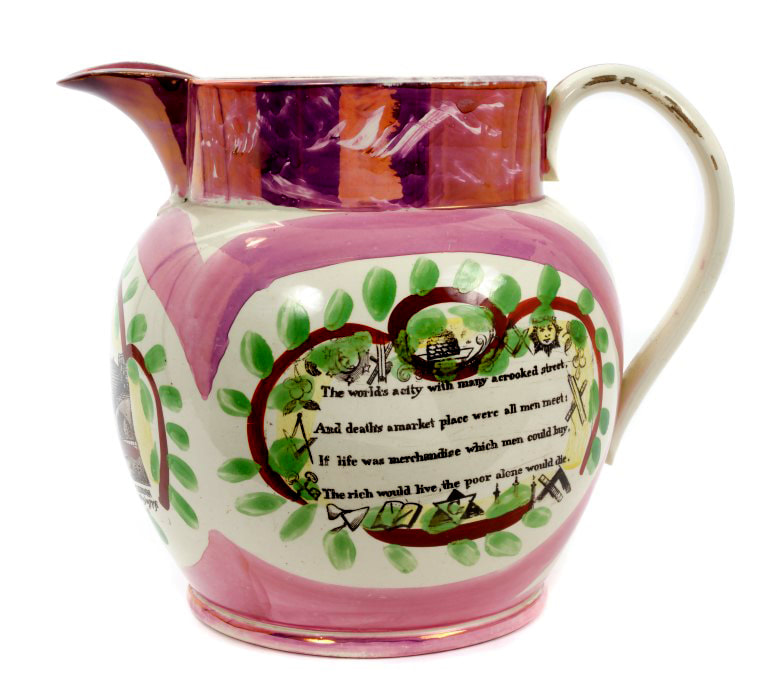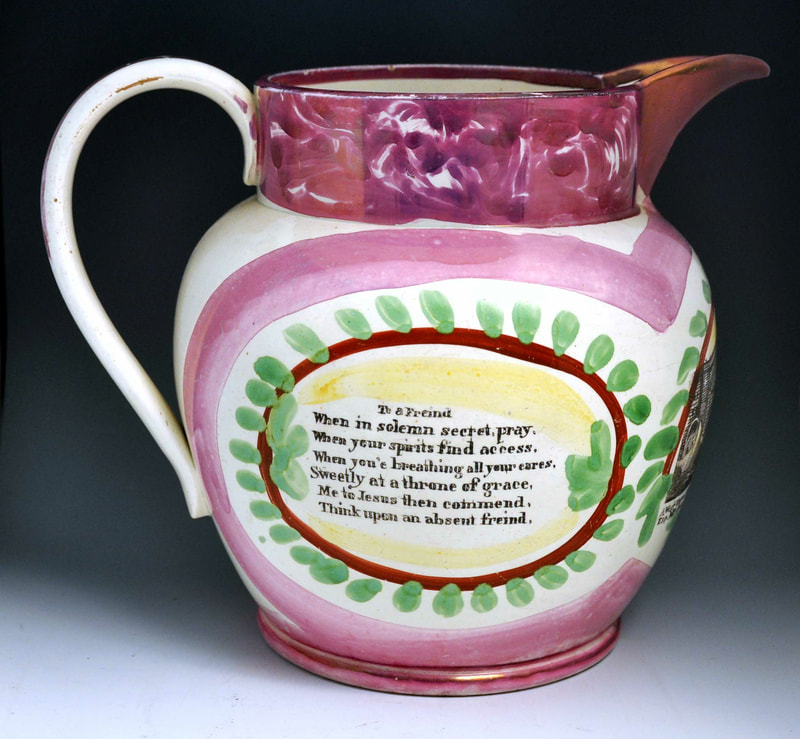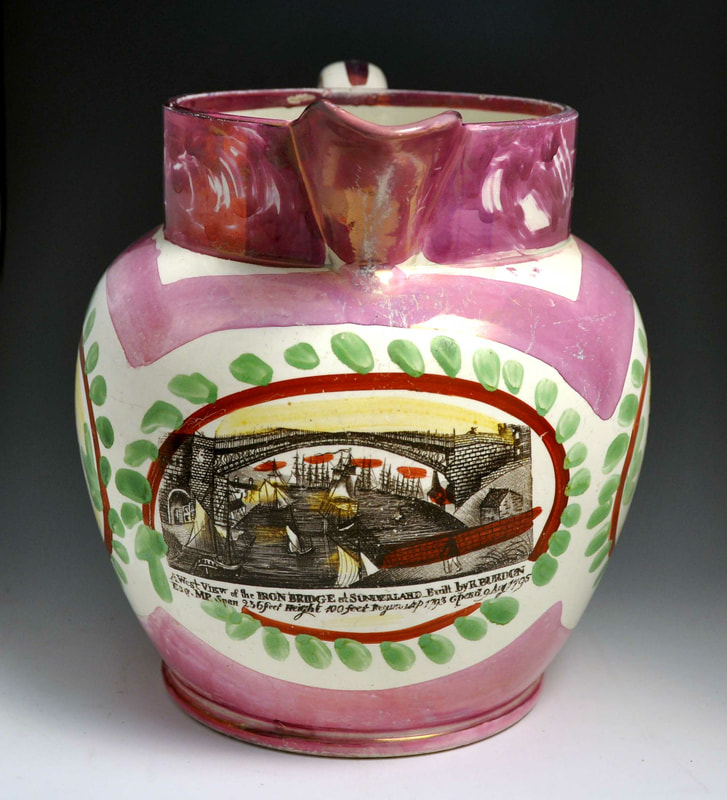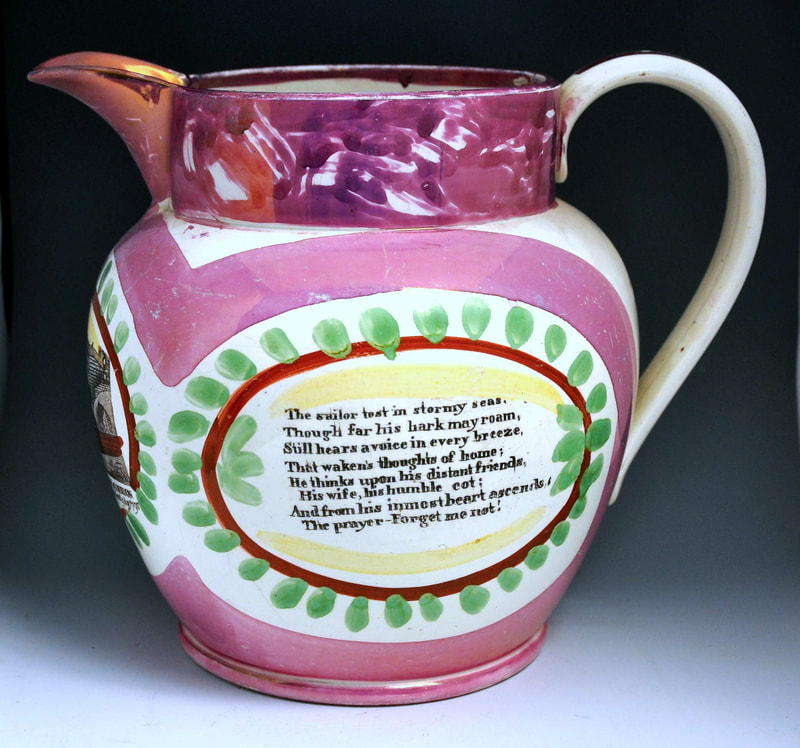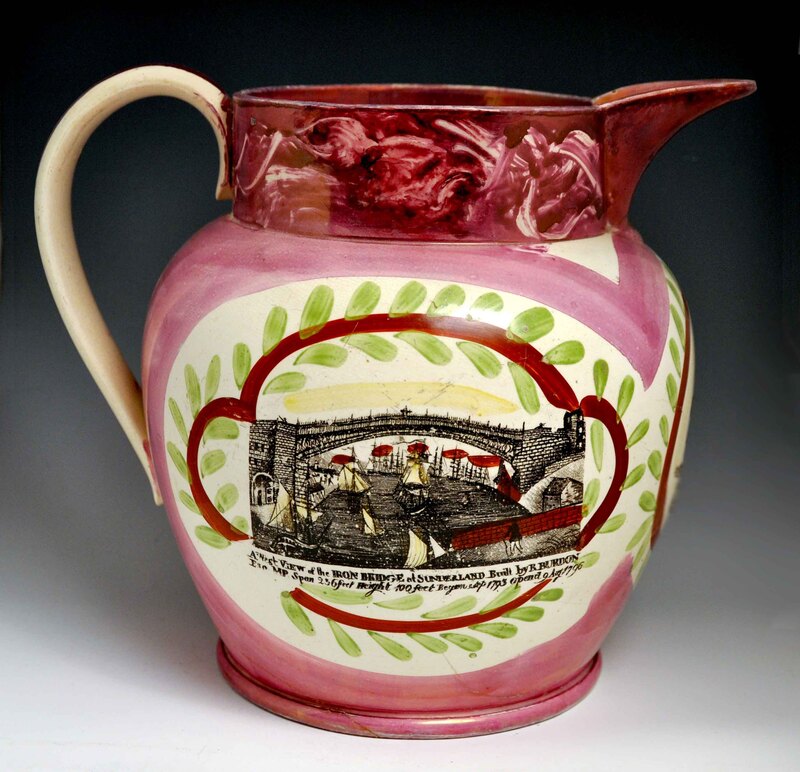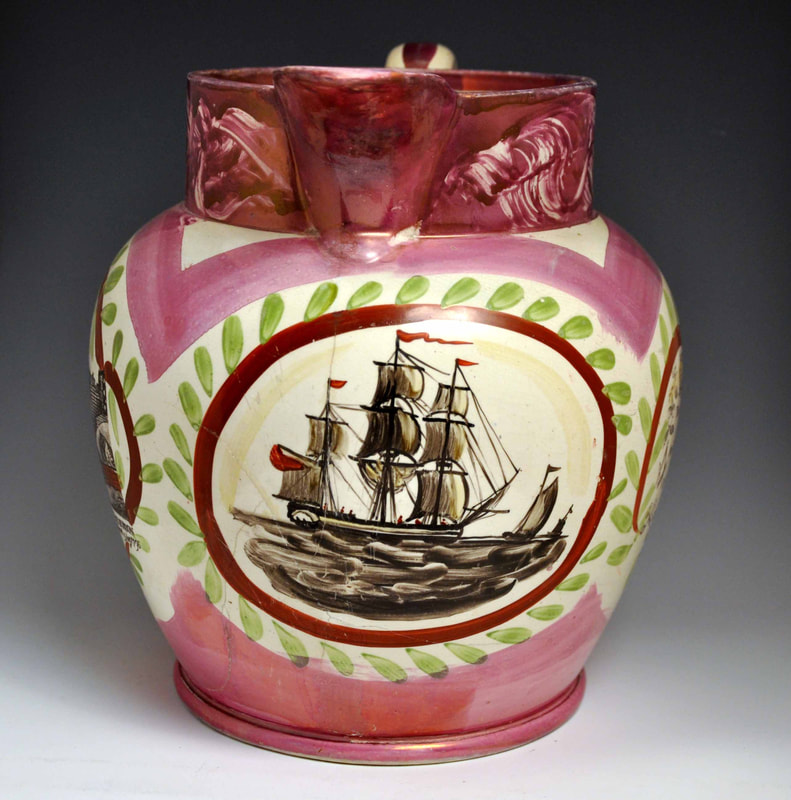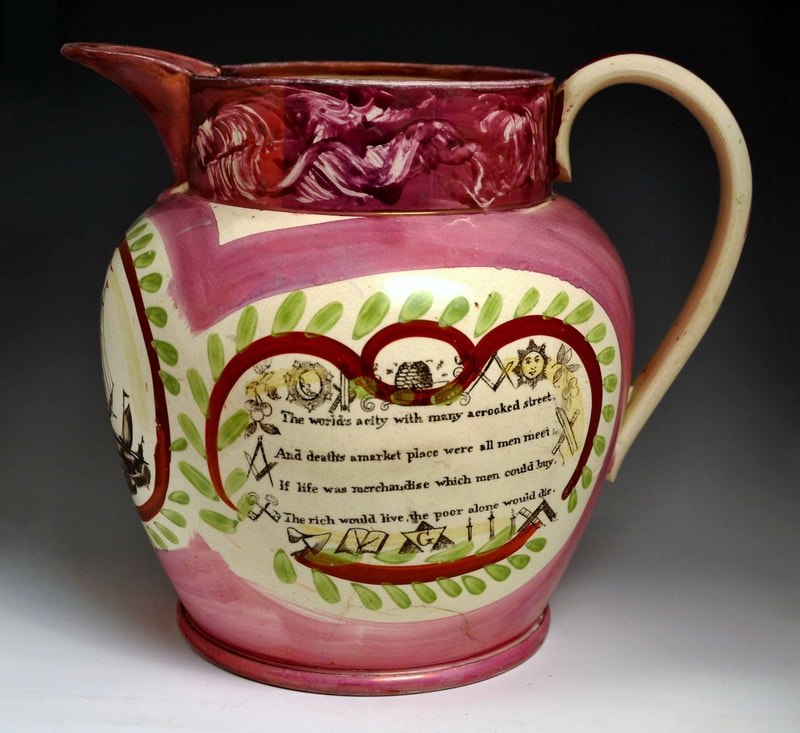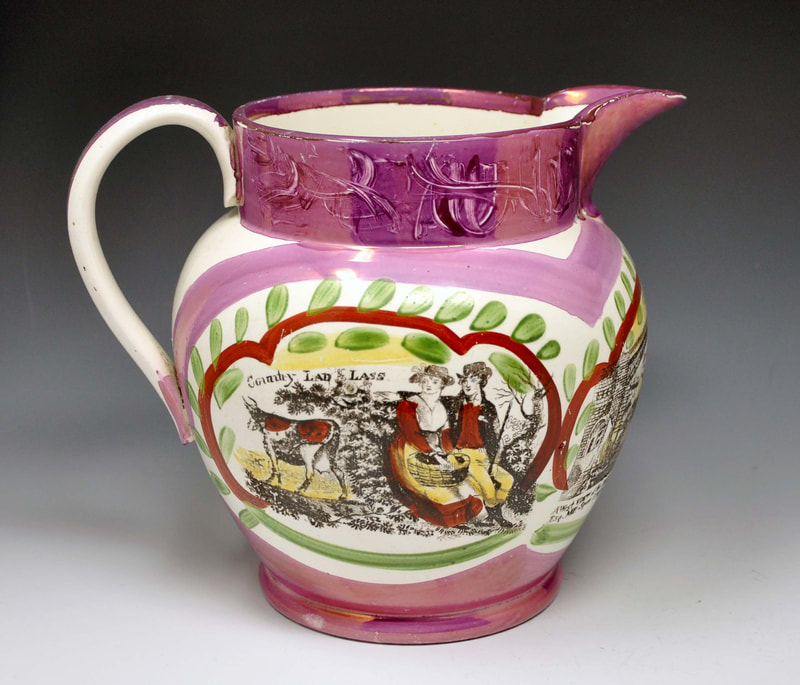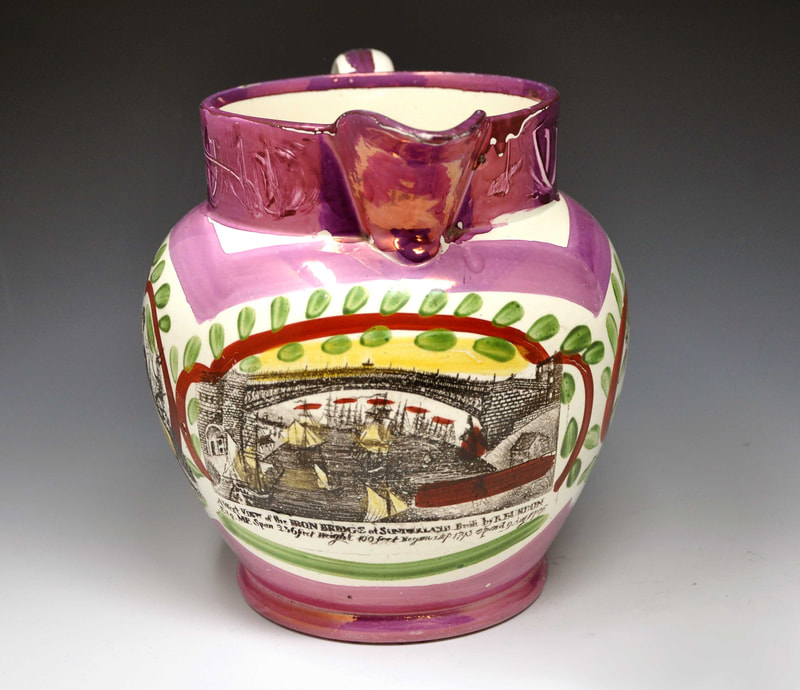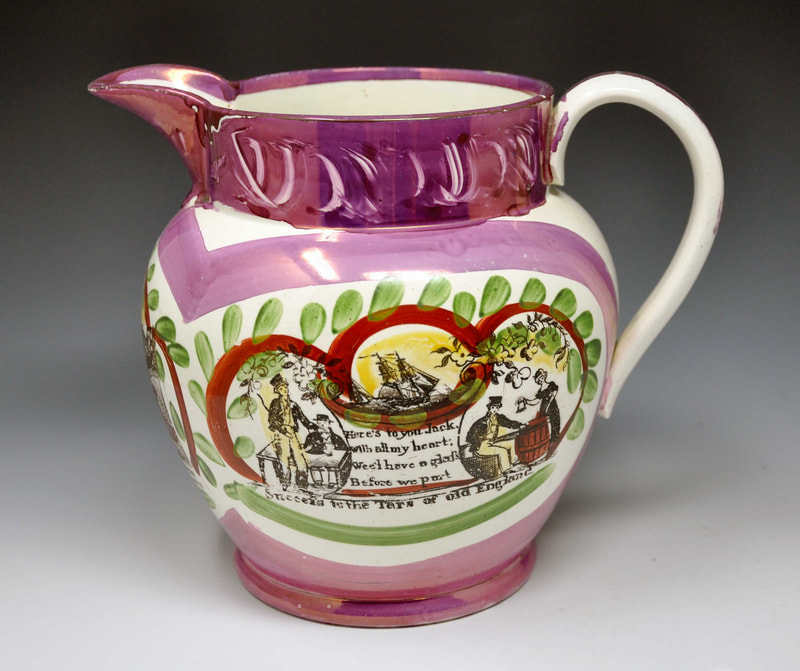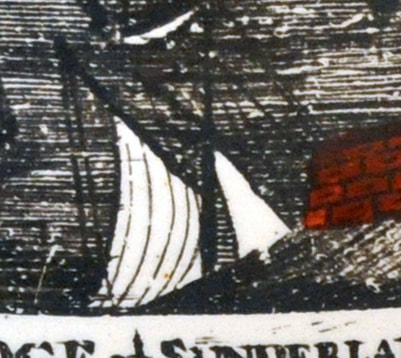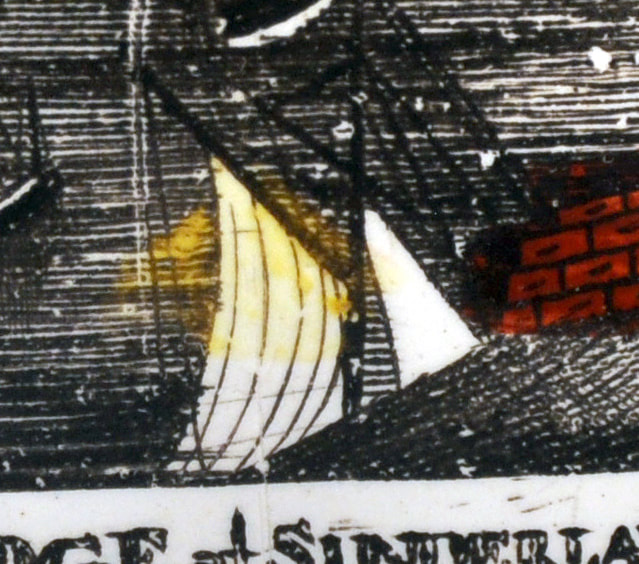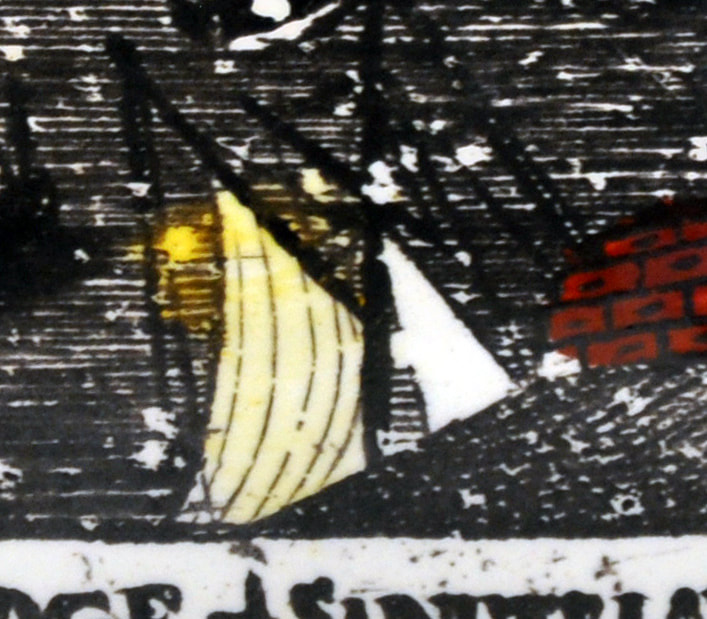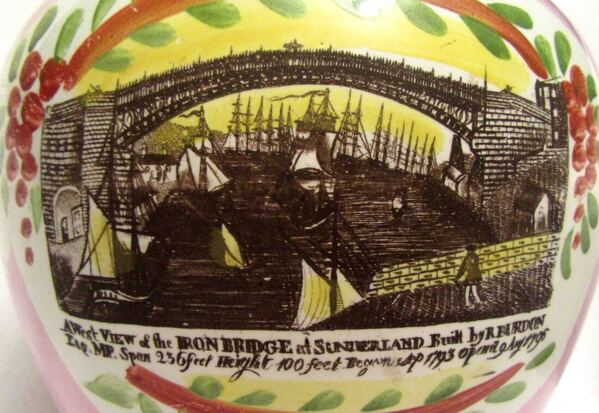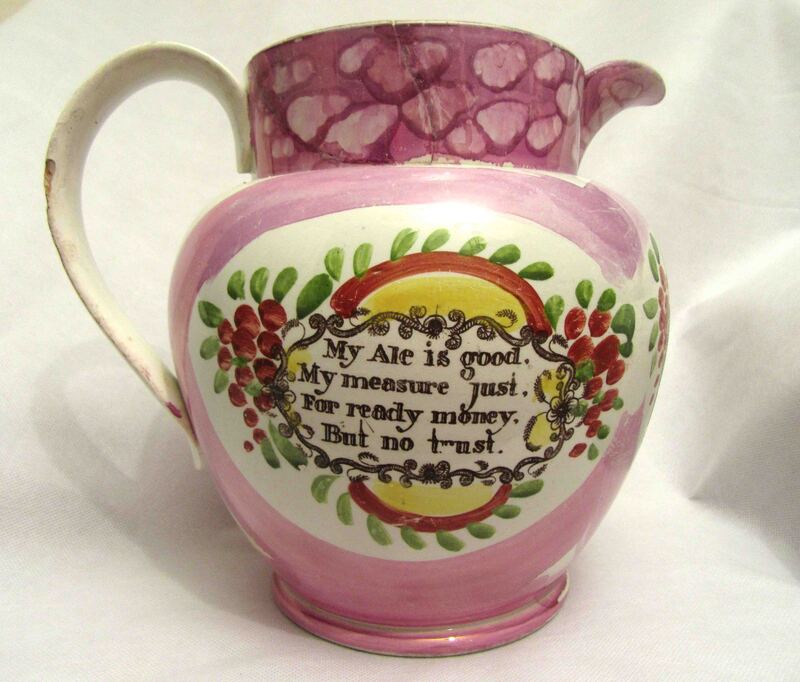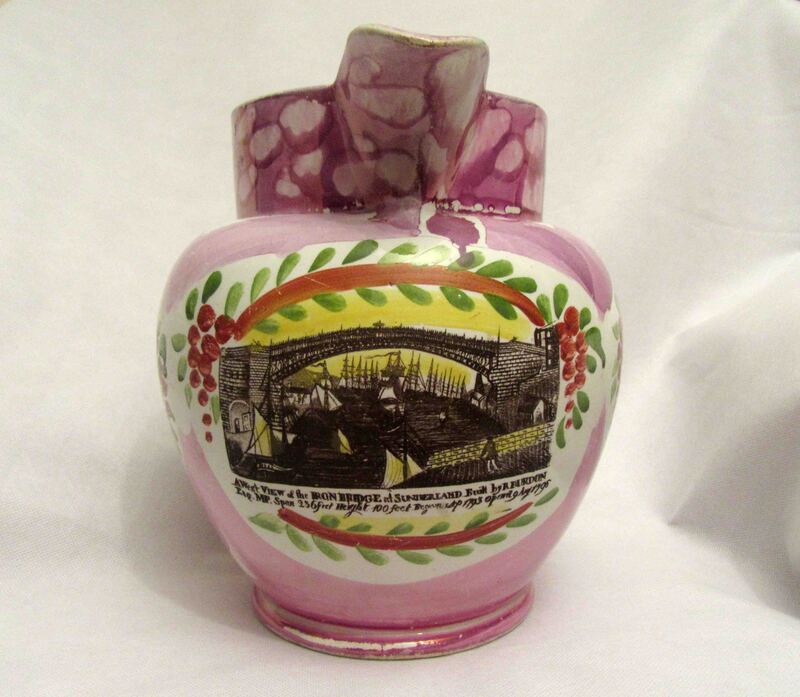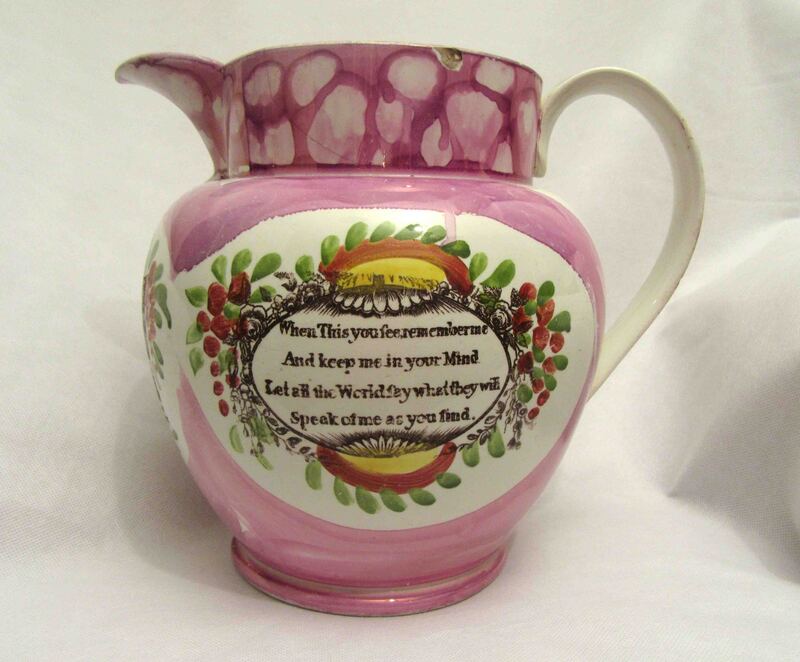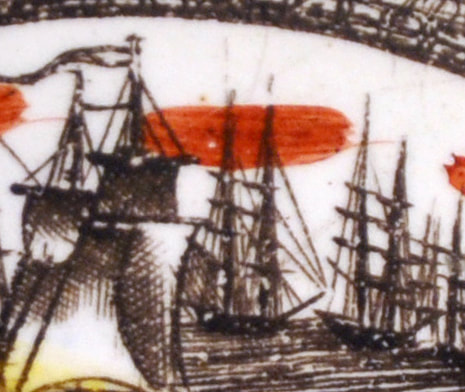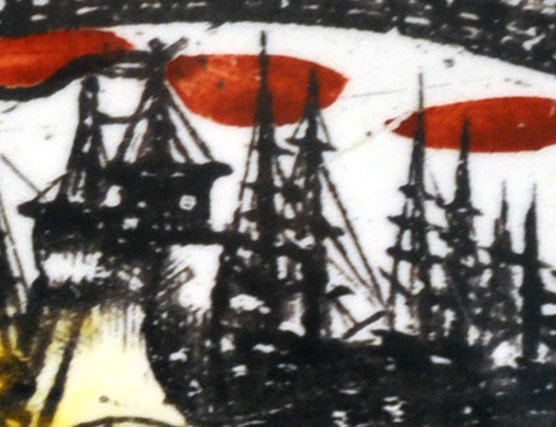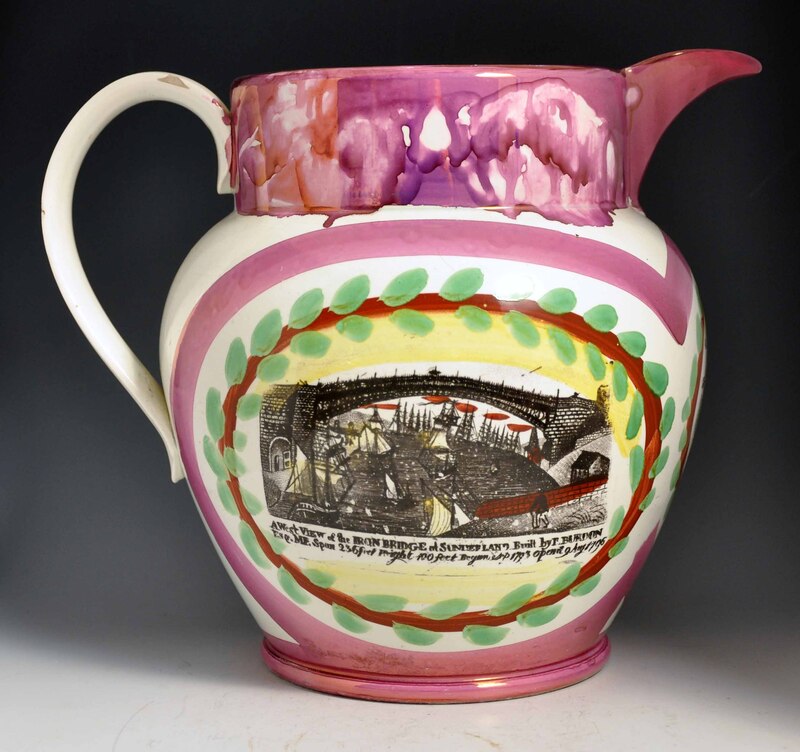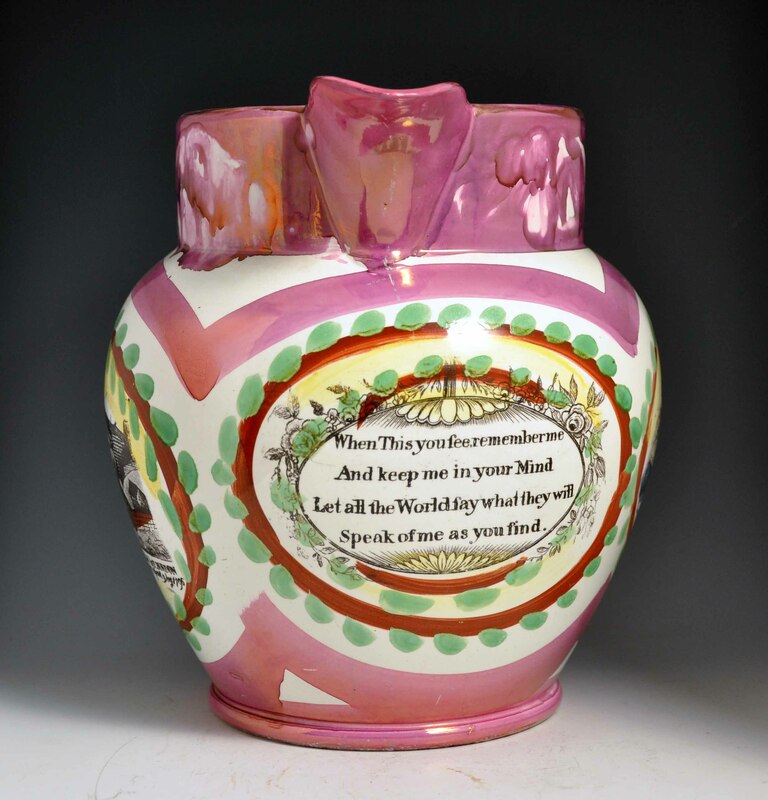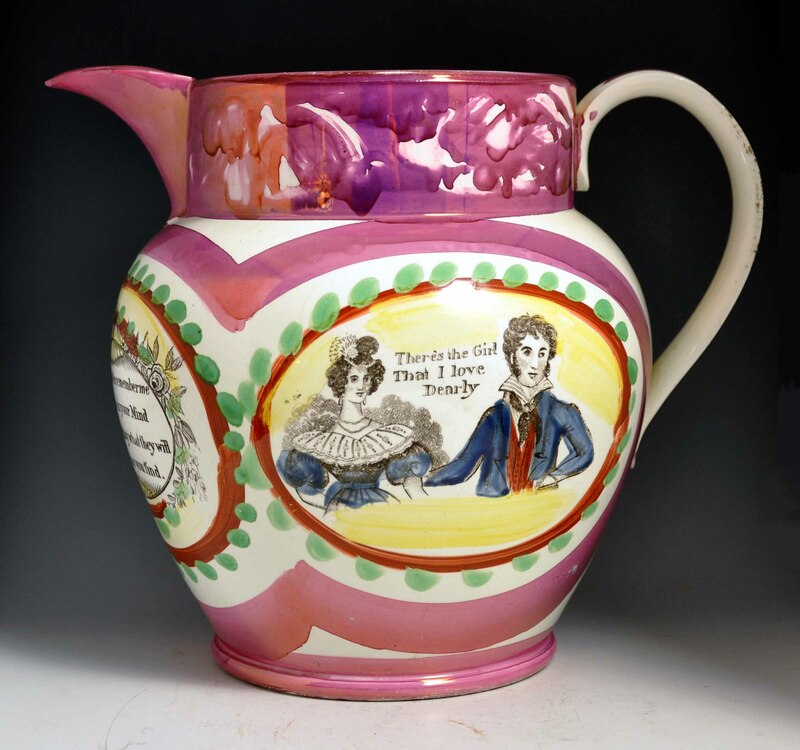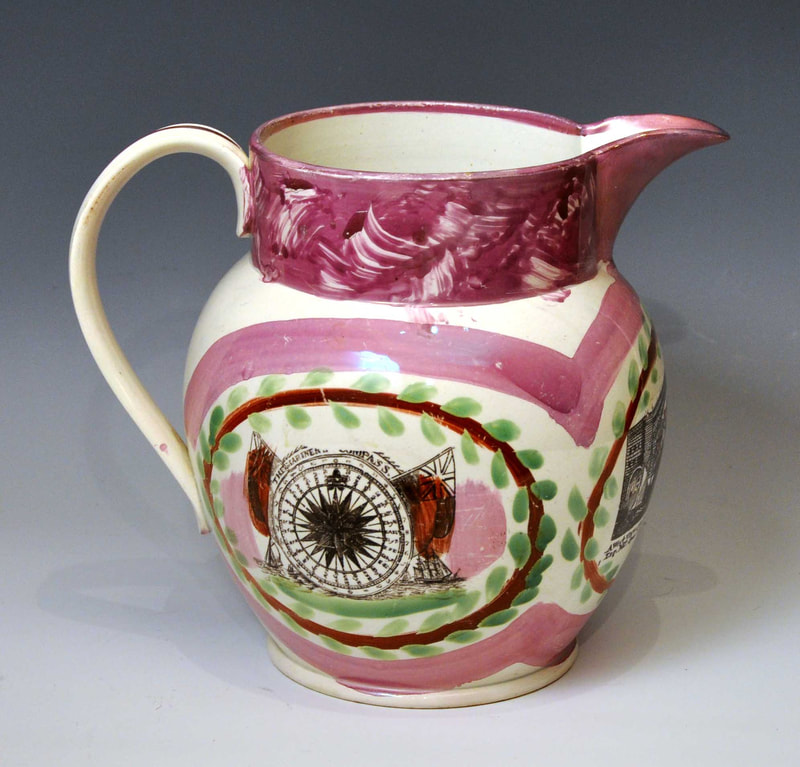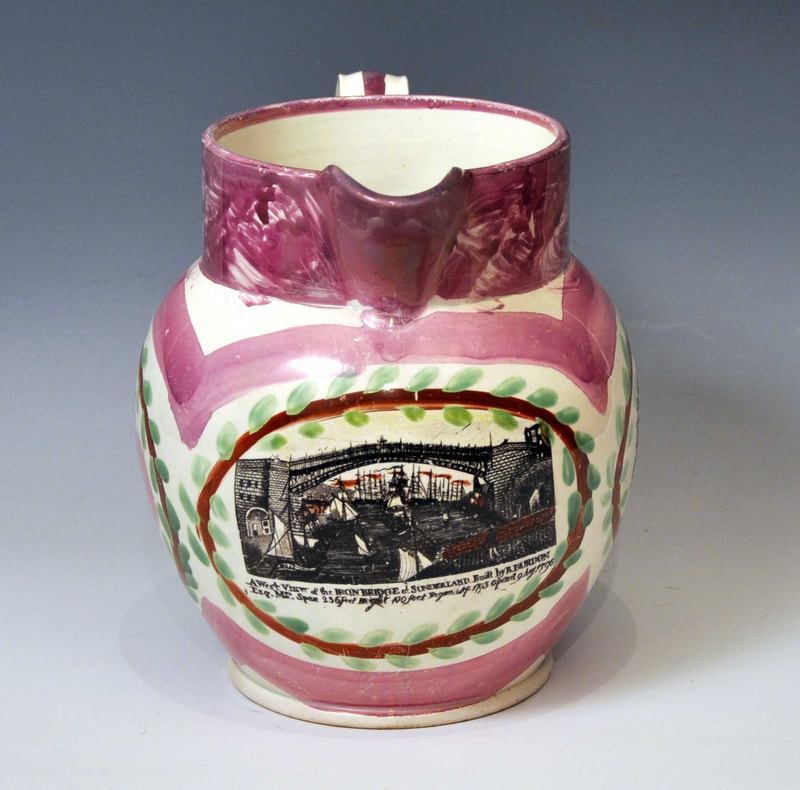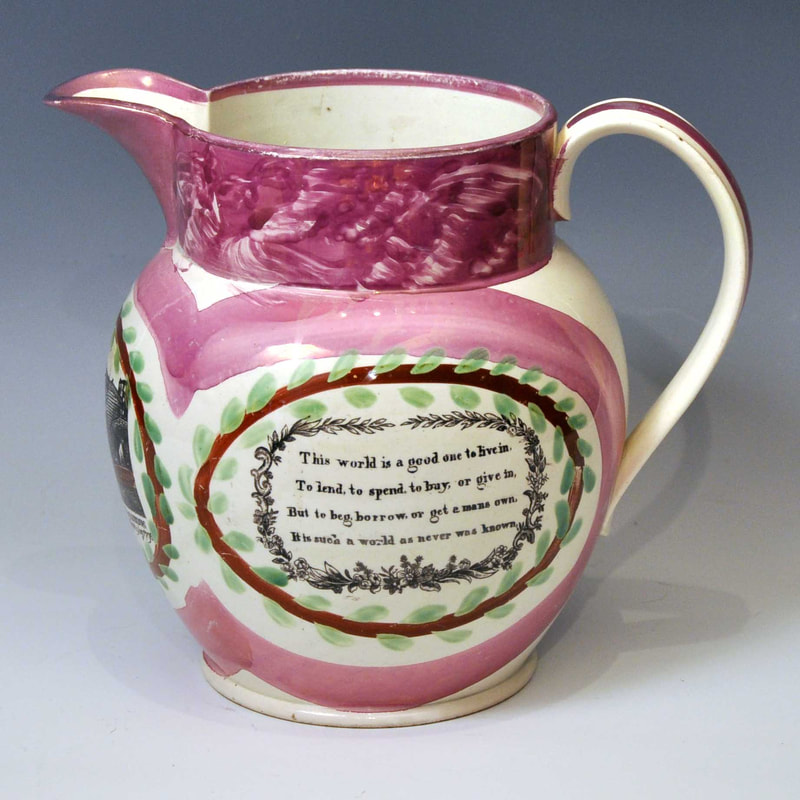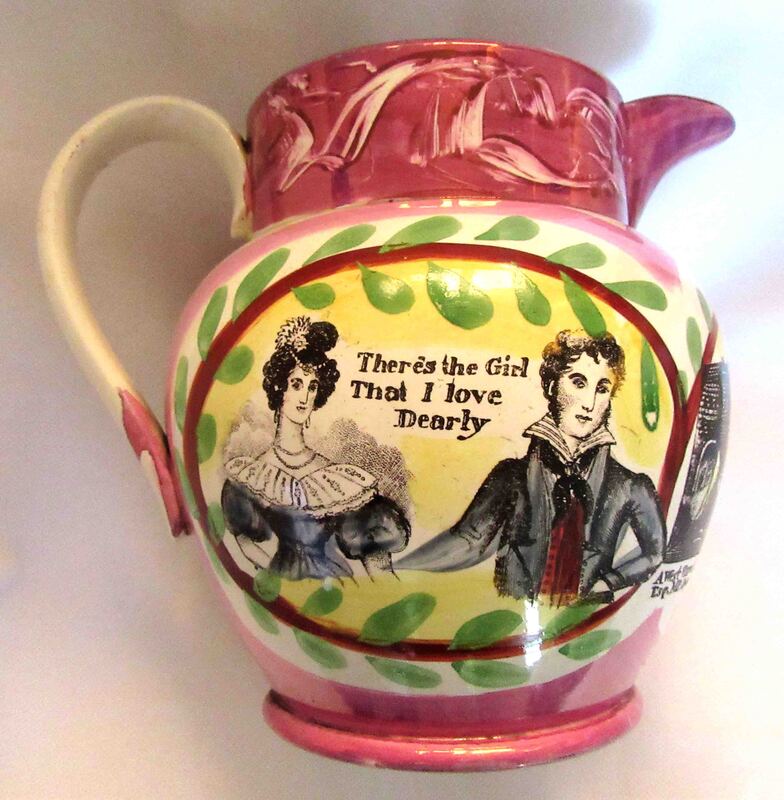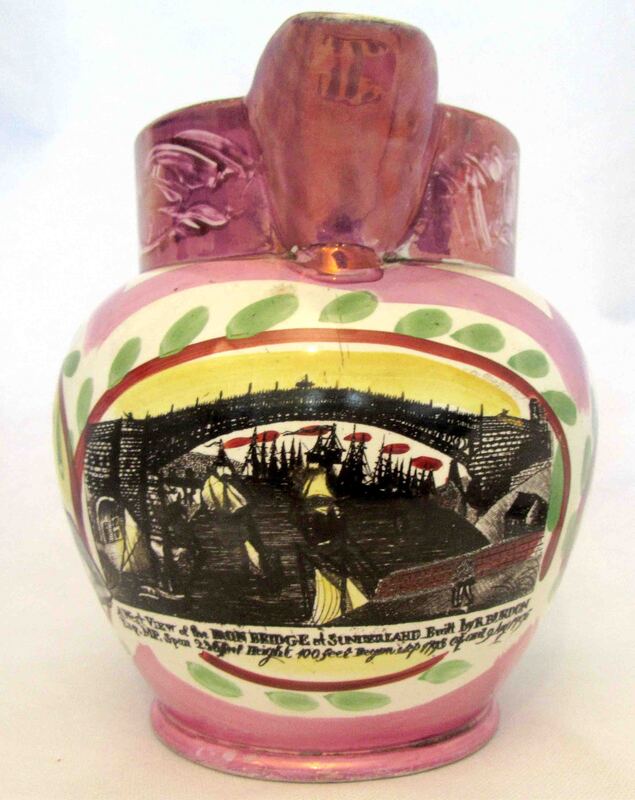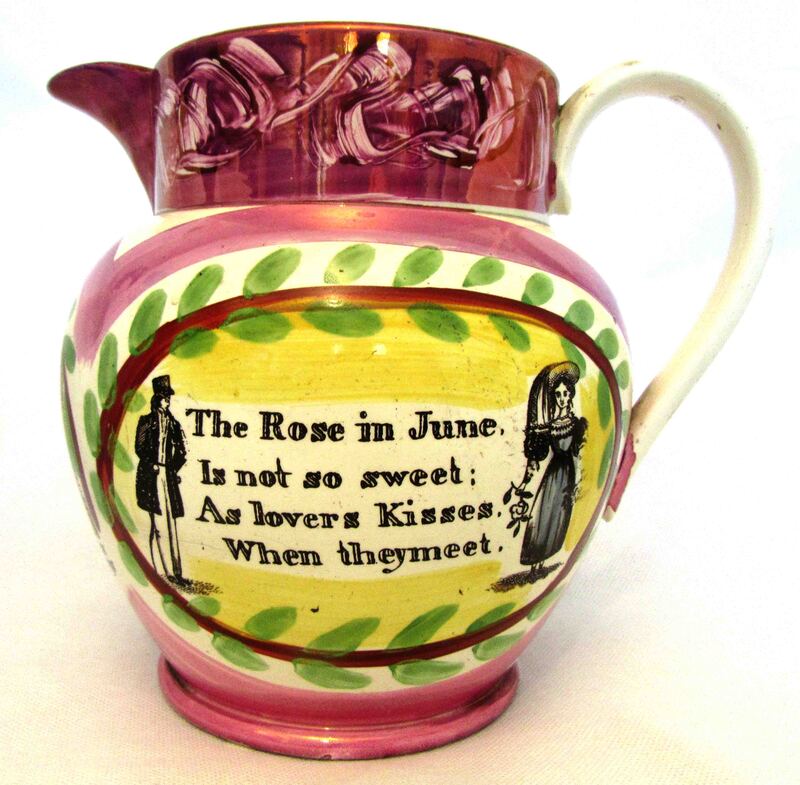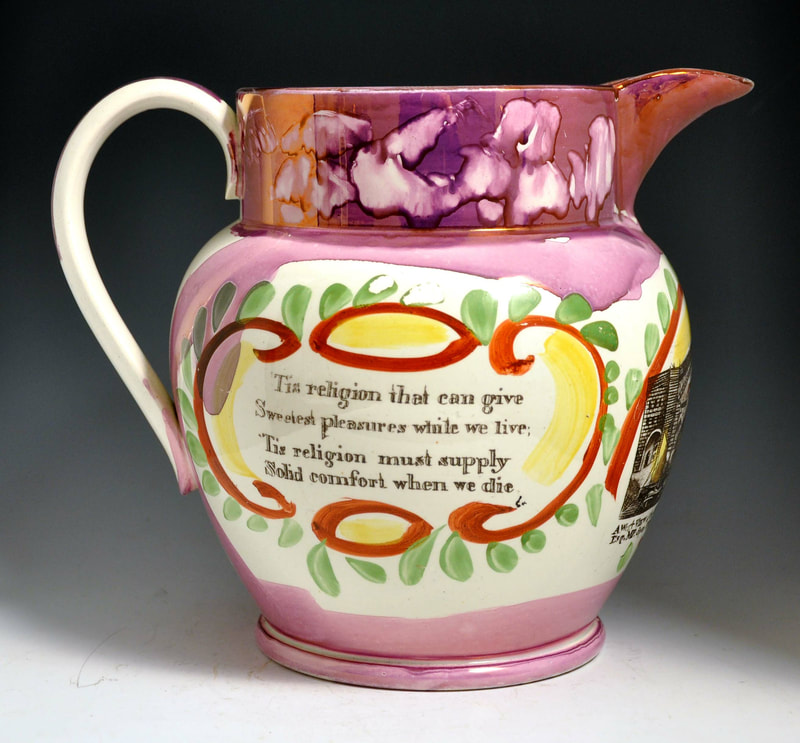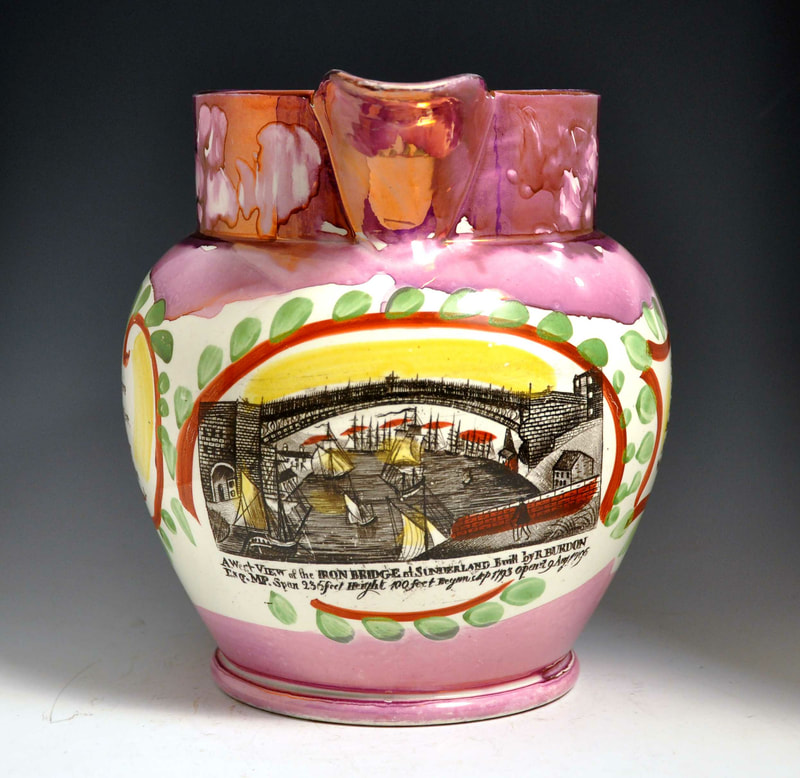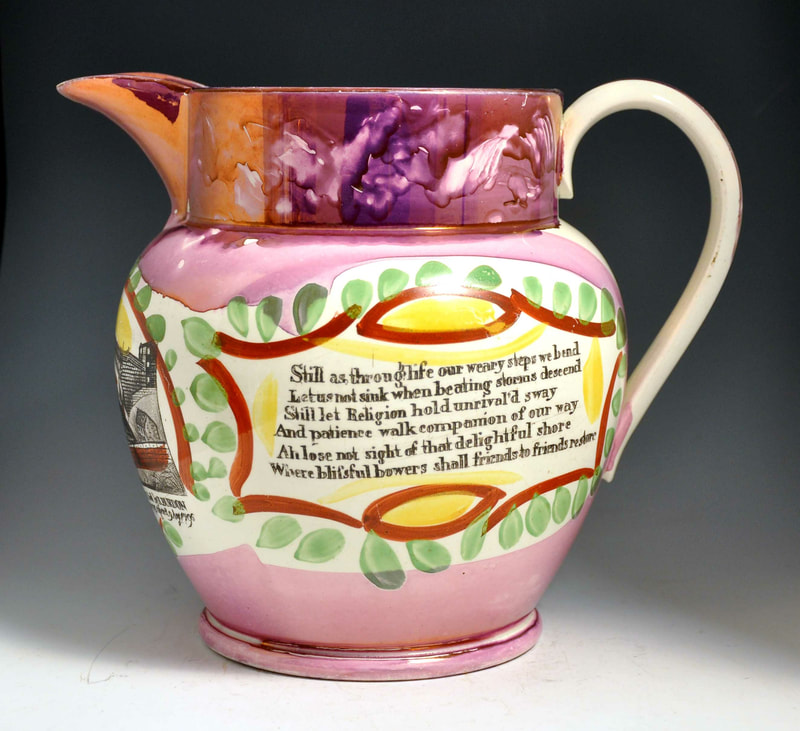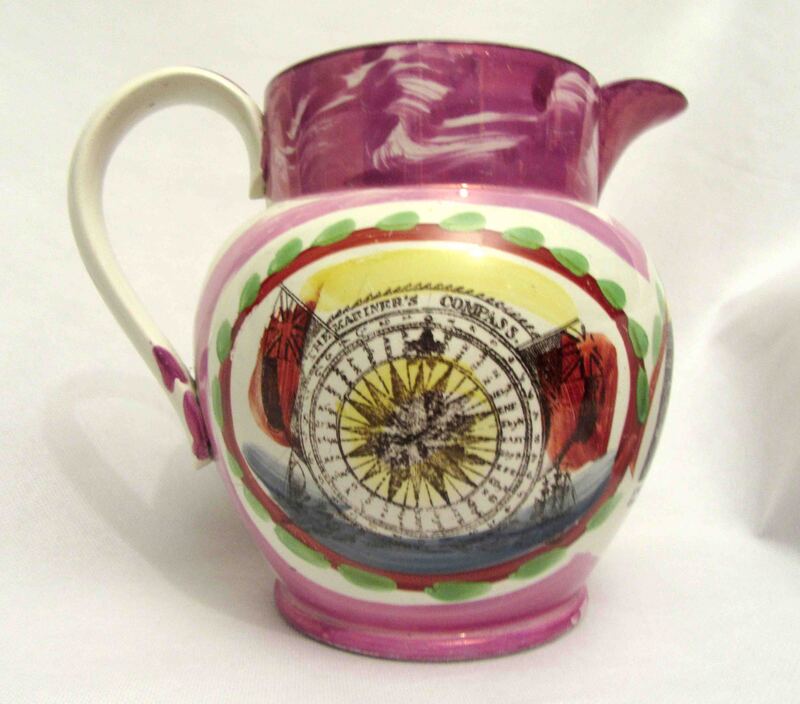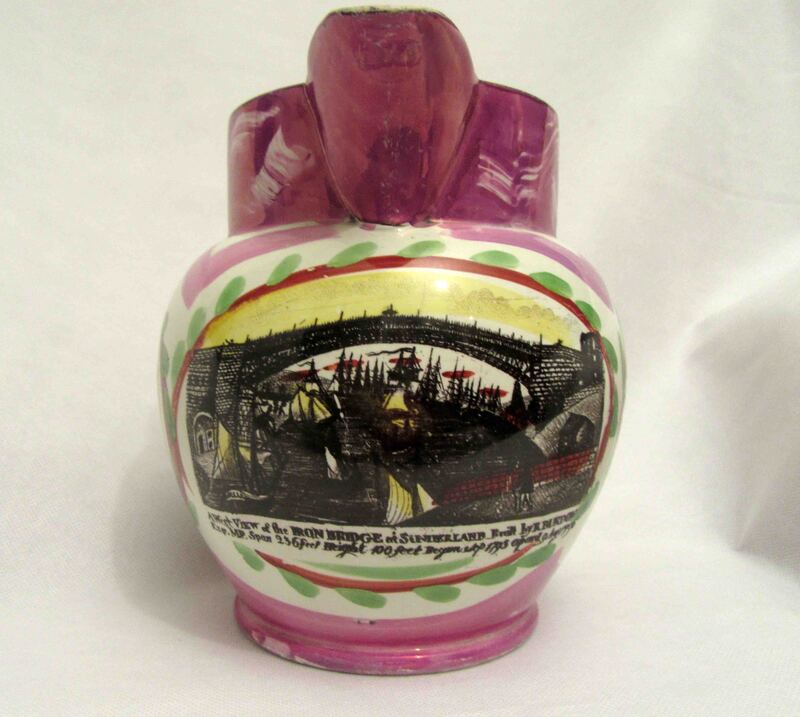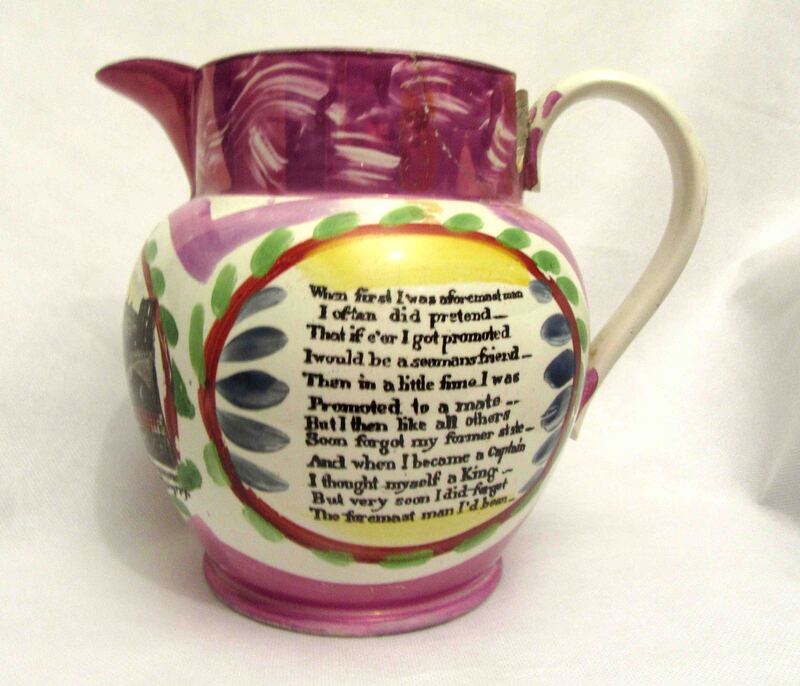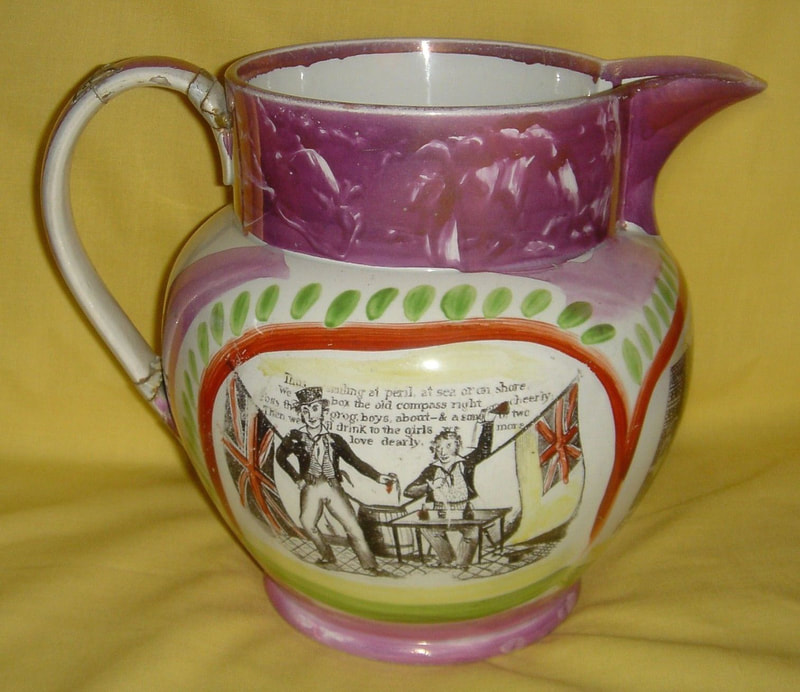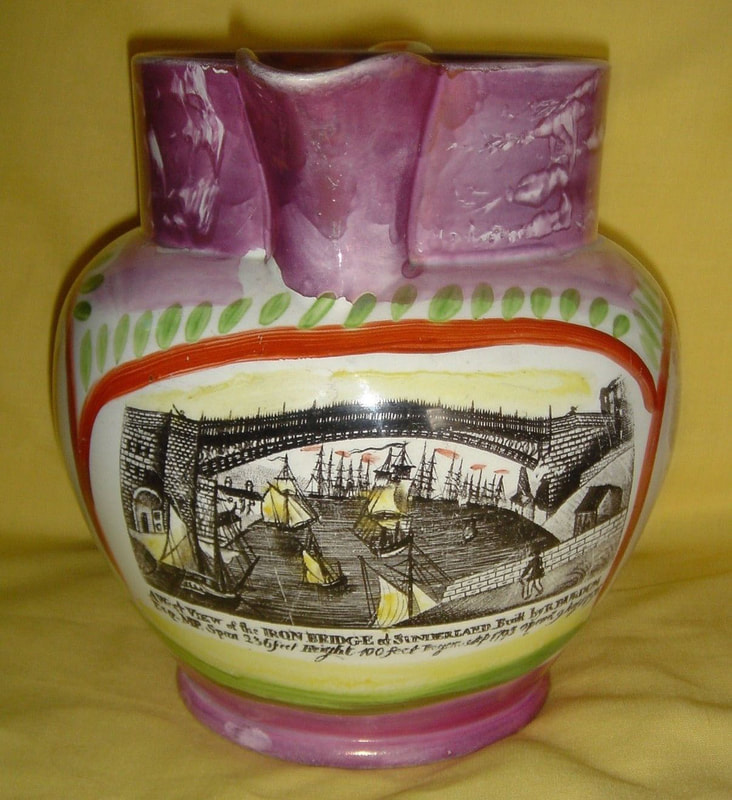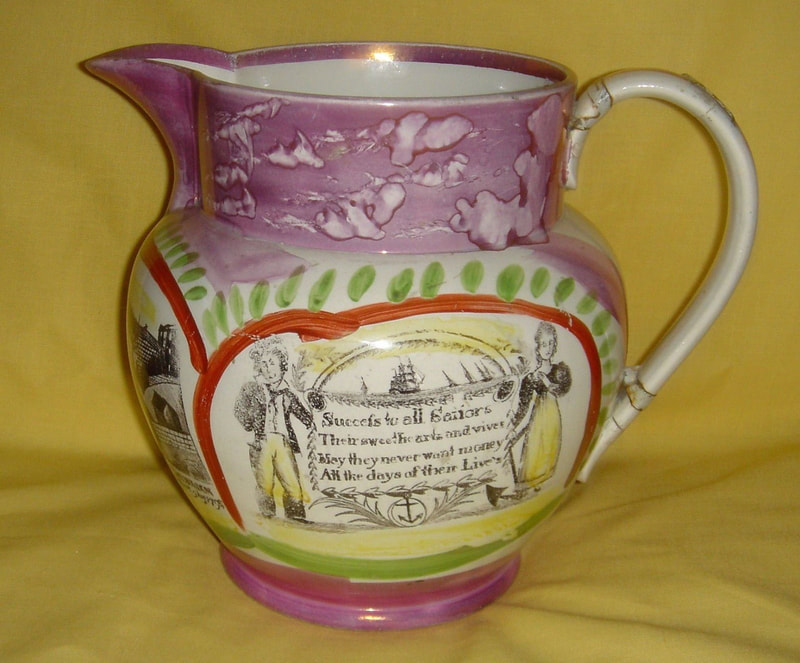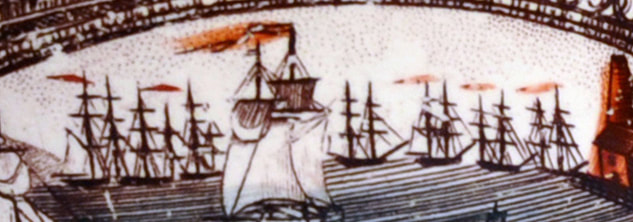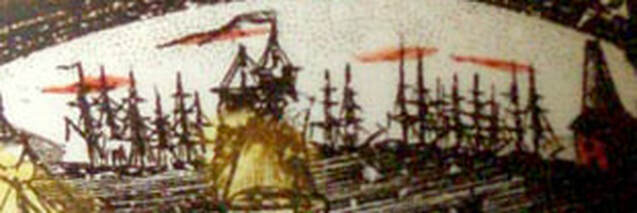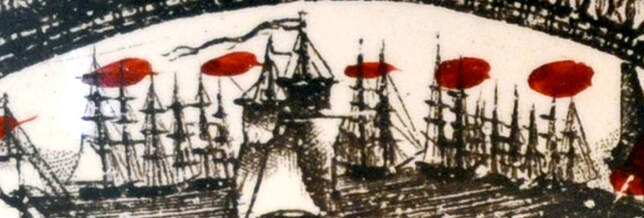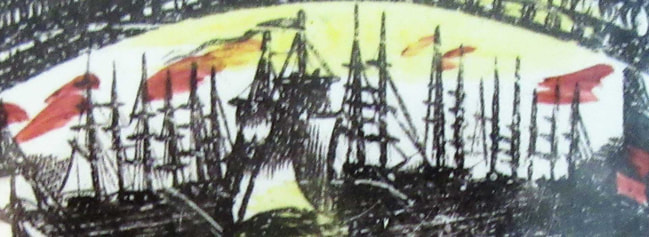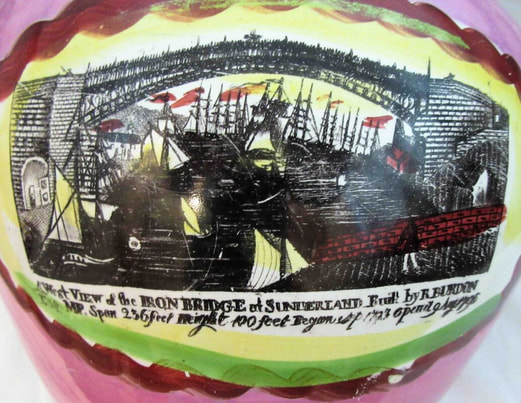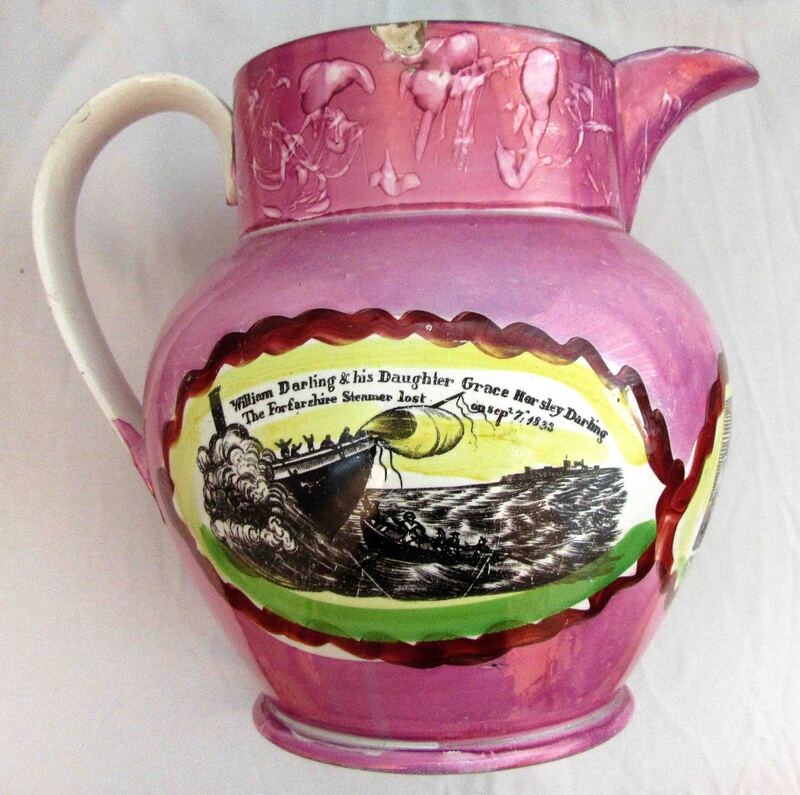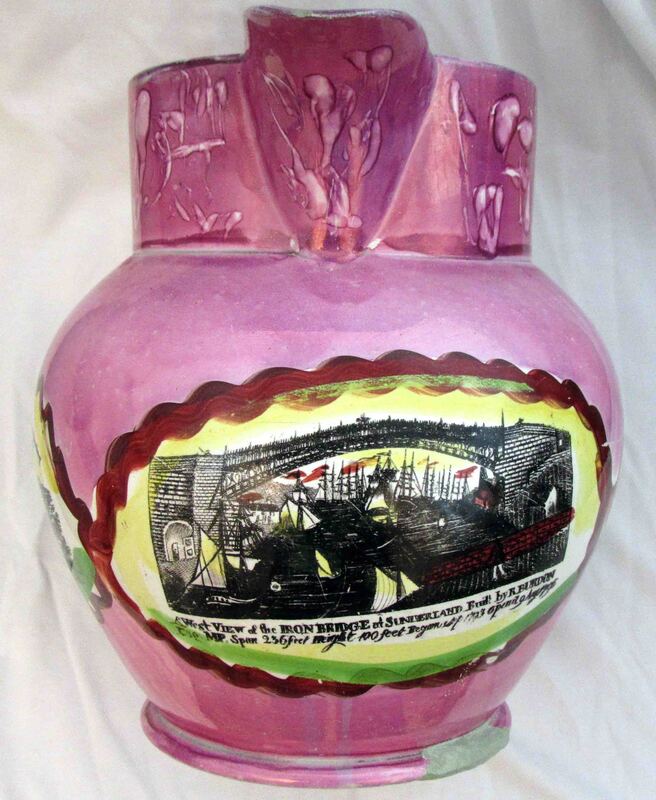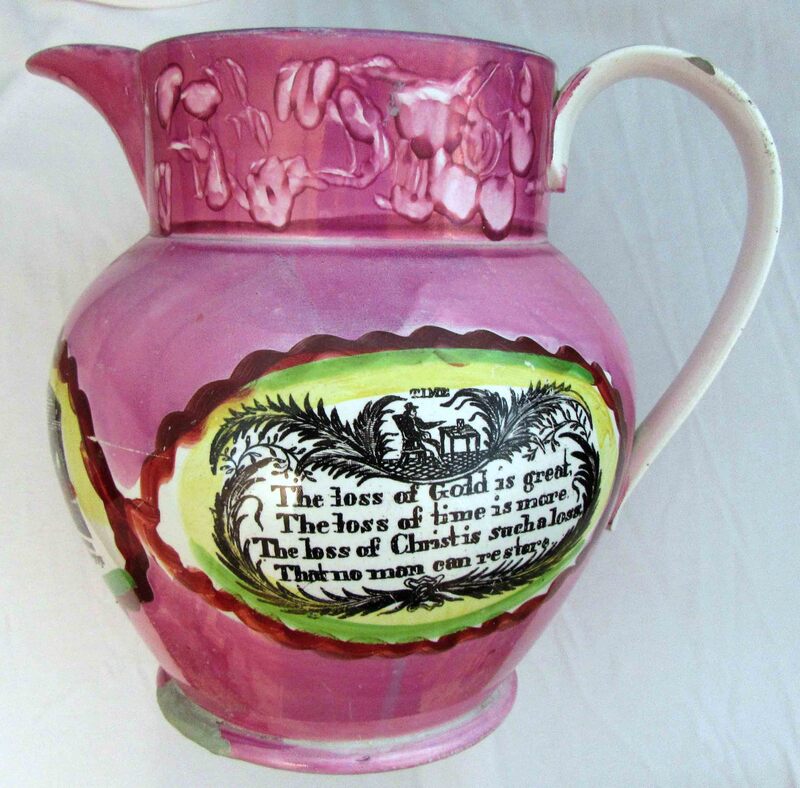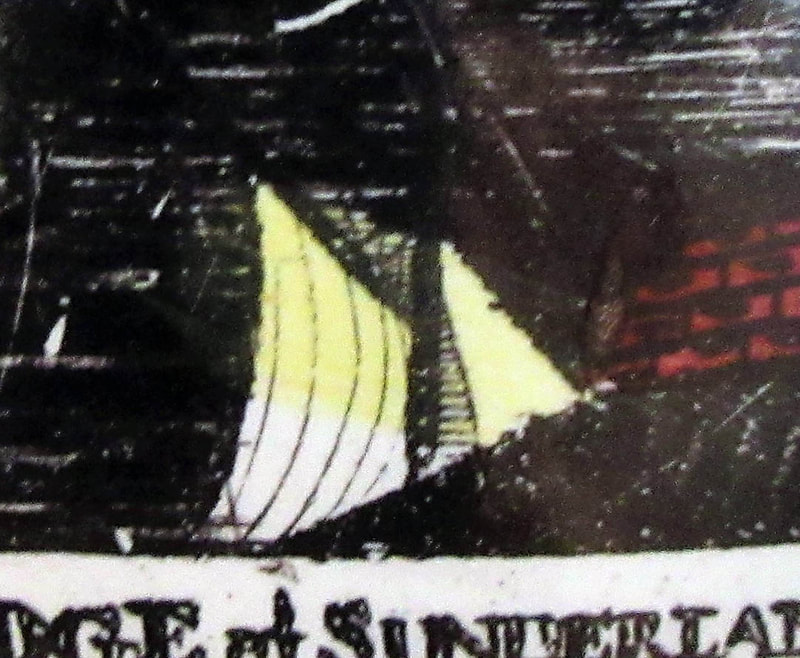West View of Cast Iron Bridge... – bridge 12
Attributed to Robert Maling's Ouseburn Bridge Pottery, Newcastle –
early to mid 1820s
Wheat-ear decorated jugs – early imprints, group 1
This is an earlier version of Baker's bridge number 12, found on creamware items. Note that, unlike the later versions of this transfer, there is no pair of vertical ropes hanging to the left of the sail in the foreground.
This is the earliest imprint on the transfer I have recorded with a dated inscription, for 1824, with a square-cornered handle. My guess is that this jug predates the items above. The transfer's highlights appear to have been touched in with white enamel.
Attributed to Robert Maling's Ouseburn Bridge Pottery, Newcastle –
late 1820s to c1830
Wheat-ear decorated jugs – later imprints, group 1
The first detail is from the earlier group above without the ropes over the sail. They are hard to spot, but there are three small horizontal nicks in the left edge of the sail, seen most clearly in the first detail. These are also visible (just) in the second detail from the first jug below. So it appears that the transfer plate was re-engraved, from inscriptions on similar jugs, my guess is around 1828.
Attributed to Robert Maling's Ouseburn Bridge Pottery, Newcastle –
early to mid 1830s
Green-fleck decorated jug – group 1
|
|
The William IV jug above has green-flecked decoration like the group 2 jugs below, but does not have the tell-tale scratches on the sail discussed in the section below. It appears to be from the same copper plate as the wheat ear examples above. The left detail is the green-fleck jug, the right is from the later-imprint wheat ear jug above (click to enlarge). Note the small vertical scratch above the letter 'D' in bridge. Below are more jugs of similar date (c1832).
|
Below is a later example of the transfer with yellow enamels. Like the jugs above, it does not have the scratches on the sail associated with the group 2 examples below. Also, the bricks on the wall don't have dashes in their centre.
Attributed to Robert Maling's Ouseburn Bridge Pottery, Newcastle –
mid to late 1830s
Green-fleck decorated jug – group 2
This is the common rectangular version recorded by Baker as bridge view number 12.
There are horizontal scratches on the sail in the foreground that appear on the bridge transfer of all these jugs. Note also that the bricks of the wall have a small dash in the centre of each brick that doesn't appear on the group 1 transfer. The first two details are from the first and last jugs above. The third detail is from the later group of jugs below.
Attributed to Robert Maling's Ouseburn Bridge Pottery, Newcastle –
late 1830s to early 1840s
Green-fleck decorated jug – group 2
Note that in these later items the masts in the background almost touch the underside of the bridge. This makes this group contemporary with the red-squiggle jug further down the page, which has the Grace Darling rescue transfer, so must be 1838 or later.
Below are some other examples with the taller masts, This group tend to have stronger yellow enamels than those above. The first two jugs below appear to be the earliest. The lack of yellow enamels makes the second example look older, but it has a transfer imprint with the long masts.
|
|
The detail on the left is from the last jug in the previous section. Note the faint vertical scratch above the mast in the centre of the detail. When the plate was re-engraved sometime later, the mast was lengthened to cover the scratch. The right detail is from the first jug below. |
How many transfer plates?
So many jugs were made with this bridge scene, that it's not unreasonable to assume there were multiple transfer plates. However, both the group 1 and group 2 transfer plates above appear to have been extensively re-engraved over a long period of use. Note that the masts of the ships in the background multiply and get taller and taller over time. Some of their changing shape is owing to the engraver adding new details. However, the distortion can also partially be explained by the plates being passed through heavy rollers many hundreds of times, causing them to buckle and stretch. Periodically the plates had to be restored by re-flattening, each time making the masts a little longer. The greatest distortion occurs in the group 2 examples. These jugs were mass produced on a huge scale. It is possible that as the group 1 transfer plate was printed onto a new copper plate and used as the basis for the group 2 transfer.
Group 1
Group 2
Attributed to Robert Maling's Ouseburn Bridge Pottery, Newcastle –
late 1830s to early 1840s
Red-squiggle decorated jug
This transfer has the same scratches on the sail as those in group 2 above, but appears to have been re-engraved to restore clarity. The earliest date it could be is 1838, as the Darling rescue happened in September of that year.
|
Looking at the elongated masts in the background under the bridge (see above), I wouldn't have believed that this jug came from the same transfer plate as the green-flecked jugs. However, the sail in the foreground has the same scratches on the left side. Green-fleck jug left detail: red-squiggle jug right detail. |
